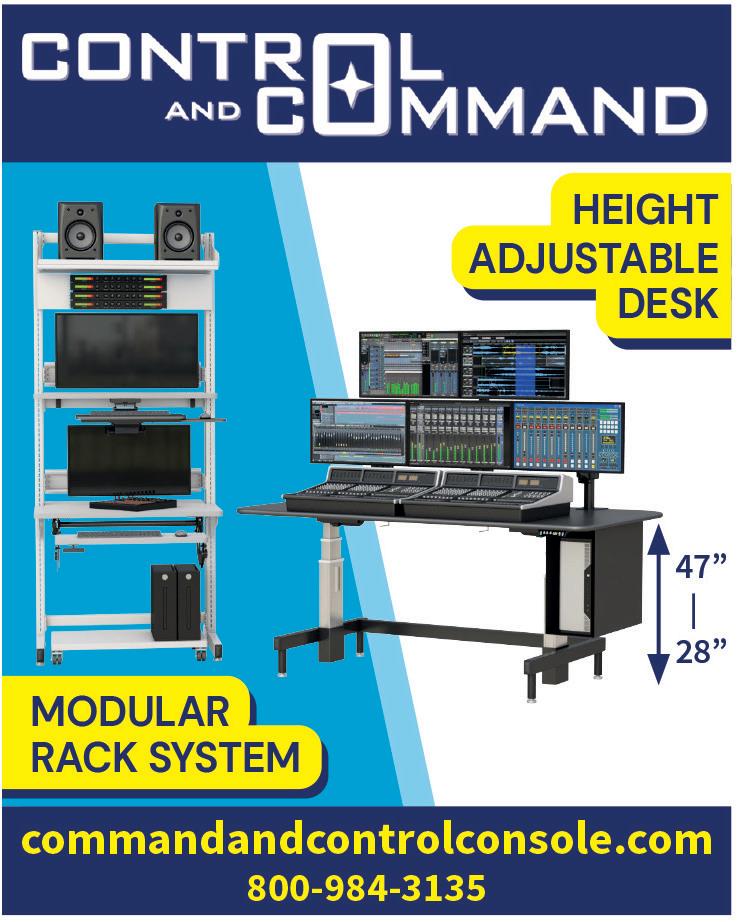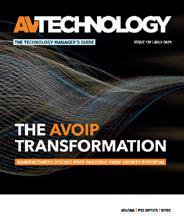




















Sony’s BRAVIA Professional Display BZ35L series is a truly professional display that’s designed for flawless roundthe-clock operation in retail, corporate and educational environments. Add impact to digital signage and employee communications with bright, colorful high-contrast 4K HDR images. Pro-friendly features simplify integration, ease operation and provides seamless content sharing in today’s connected AV environments. Flexible customization options and 32 GB of storage make BRAVIA Professional Display BZ35L series the ideal LED display for any of your business needs.
Available in screen sizes 55”, 65”, 75” and 85”, BRAVIA Professional Display BZ35L series grab your audience’s attention with high 550 nit screen brightness for punchy, high-impact visuals that are always seen clearly. Advanced Sony picture processing technologies ensure your content looks its very best. The panel’s extra-wide viewing angle ensures that everyone in the room can enjoy clear, bright images wherever they’re positioned.
BRAVIA Professional Display BZ35L series come equipped with 3-Year Standard Warranty, Advanced Replacement Program and White Glove Service Program.
Contact your Sony Representative or visit our website to learn more.









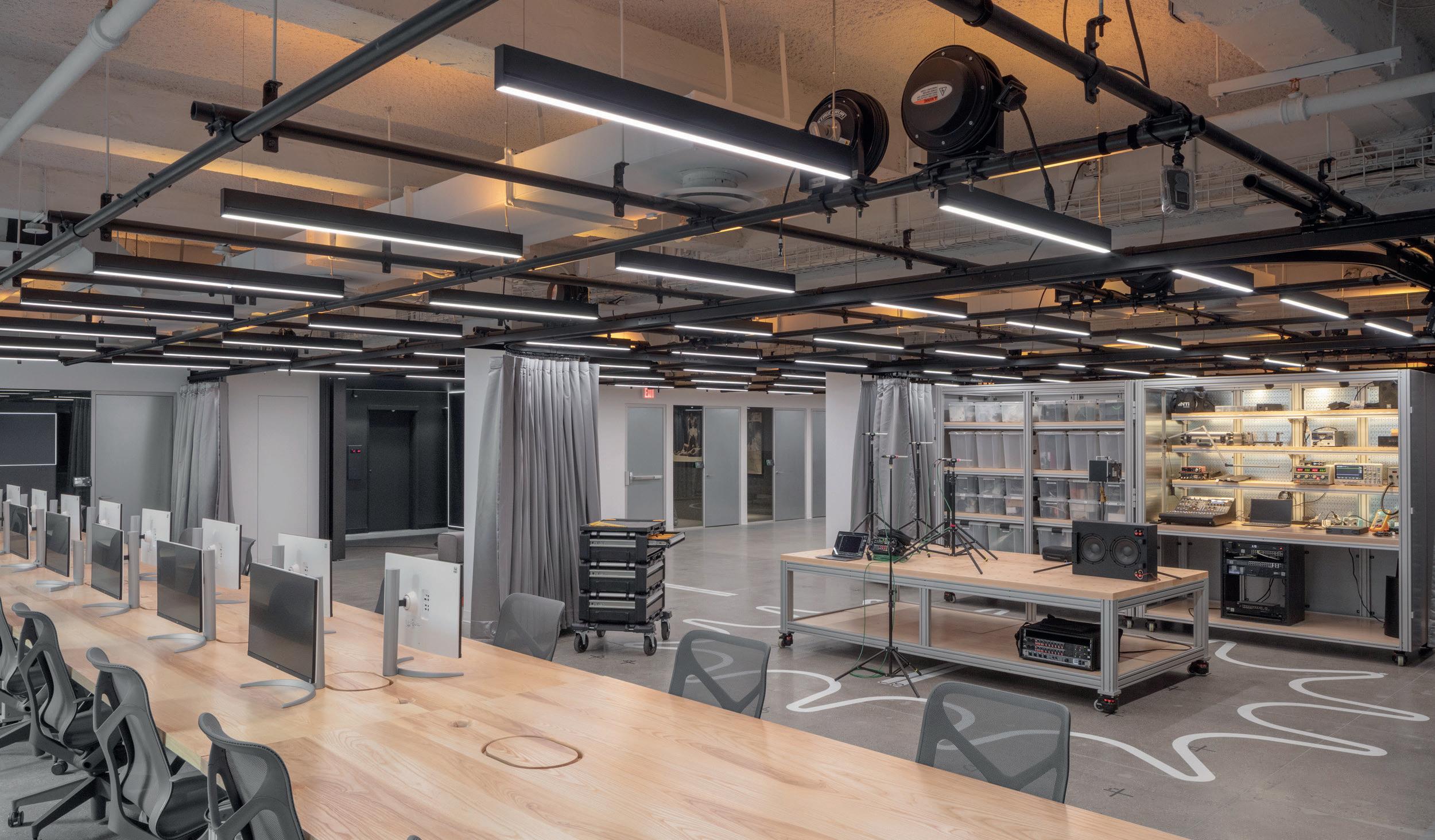



Boost collaboration in your Microsoft Teams Rooms simply and securely. Shure IntelliMix Room Kits deliver best-in-class audio and video for rooms of all sizes with no echo, noise, or reverb. And with exceptional video framing, you can put every meeting participant in the spotlight.

FOLLOW US twitter.com/AVTechnologyMag
CONTENT
Brand and Content Director, Cindy Davis, cindy.davis@futurenet.com
Contributing Writer, Macy O’Hearn
Graphic Designers, Sam Richwood, Rober Crossland
Production Managers Heather Tatrow, Nicole Schilling
ADVERTISING SALES
Managing Vice President of Sales, B2B Tech
Adam Goldstein, adam.goldstein@futurenet.com 212-378-0465
Janis Crowley, janis.crowley@futurenet.com, 845-414-6791
Debbie Rosenthal, debbie.rosenthal@futurenet.com, 212-378-0473
Zahra Majma, zahra.majma@futurenet.com, 845-678-3752
SUBSCRIBER CUSTOMER SERVICE
To subscribe to AV Technology or Future’s other AV industry brands, go to https://www.smartbrief.com/subscribe
LICENSING/REPRINTS/PERMISSIONS
AVTechnology is available for licensing. Contact the Licensing team to discuss partnership opportunities. licensing@futurenet.com
MANAGEMENT
SVP, MD, B2B Amanda Darman-Allen VP, Global Head of Content, B2B Carmel King
MD, Content, AV, Anthony Savona VP, Head of US Sales, B2B, Tom Sikes
Managing VP of Sales, B2B Tech Adam Goldstein
VP, Global Head of Strategy & Ops, B2B Allison Markert, VP, Product & Marketing, B2B Andrew Buchholz
Head of Production US & UK Mark Constance Head of Design, B2B Nicole Cobban
FUTURE US, INC.
130 West 42nd Street, 7th Floor New York NY 10036

by Cindy Davis
LAST MONTH, THE PRESIDENT SIGNED AN executive order terminating remote work in all departments and agencies in the executive branch of Government. Will this have a ripple effect within the corporate landscape? Not if employees have a say.
According to Flex Index data, of the 13,000 U.S. companies surveyed, two-thirds have settled into a flexible work policy.
A recent article published by MIT Sloan Management Review stated, “In the long run, those leaders who move work forward by building organizations rooted in trust and focused on performance will outperform those wrestling with their own employees.”
I contend that all of this is a moot point when it comes to the necessity of high-performing AV/ IT/UC in the workplace. Before 2020, and even more so today, the workforce was distributed between campuses across the globe, traveling and working from a home office. Even if the majority of workers are in the office, being able to seamlessly collaborate at a higher level in a meeting room or with an outside client is essential.
We reached out to 47 thought leaders from AV/IT/UC manufacturers; below is a snapshot of a few.
“In 2025, it will be crucial to be prepared for shifts to the way we work, particularly as more and more organizations push for employees to return to an in-person office schedule,” said Tyler Troutman, strategic market development at Shure. “Unified communications platforms like Microsoft Teams and Zoom are evolving to offer even more seamless transitions between everyday operations like videoconferencing, chat, and file sharing.”
AV products must be tailored to meet the demands of the dynamic modern workplace environment. Larry DeFazio, regional sales manager east for Professional Display Solutions


at Sony Electronics, said, “Today’s modern workplace has become synonymous with the hybrid model—a blend of remote and in-office work.”
“Meeting rooms must be equipped with AV systems that are effortless to operate for users,” said Perry Sun, product marketing manager at Atlona. “Additionally, systems have to be duplicated across many rooms, necessitating solutions that are cost-effective to acquire and integrate.”
Rather than shifting from one return-to-office (RTO) policy to another, Dan Root, head of global strategic alliances at Barco, said, “A more effective strategy is to tailor work arrangements based on organizational, regional, and employee needs. If your back-to-office initiatives are failing, the issue may lie within your company culture, not your employees.
Improved workflow is increasingly important for increasing a company’s staff efficiency. Dan Holland, marketing manager at IHSE USA, said, “Media and entertainment organizations worldwide are now taking advantage of Display Management Systems (DMS) to integrate keyboard, video, and mouse (KVM) over IP technology to run their businesses and communicate between staff, customers, and external agencies.”
Ideas flow in both directions. “As modern workers, we have developed the ability to “context switch” and have come to expect this capability from our devices,” said Alan Young, chief product officer and chief information security officer at Mersive. “The future of the workplace, where many-to-any collaboration allows inspiration to happen at the speed of now.”
Steve Wingo, manager of technical applications engineering at Sennheiser, added, “Hybrid and remote work are here to stay for many industries. With that comes ensuring that meetings are being held effectively from all corners of the world and that whoever is online has a unified experience.”


Say goodbye to messy cables, rigid setups and limited functionality. Introduce ClickShare and welcome effortless hybrid presentation and collaboration. Get more out of your fixed meeting room setups and conference room equipment with this free Design Guide.

Download your copy now.


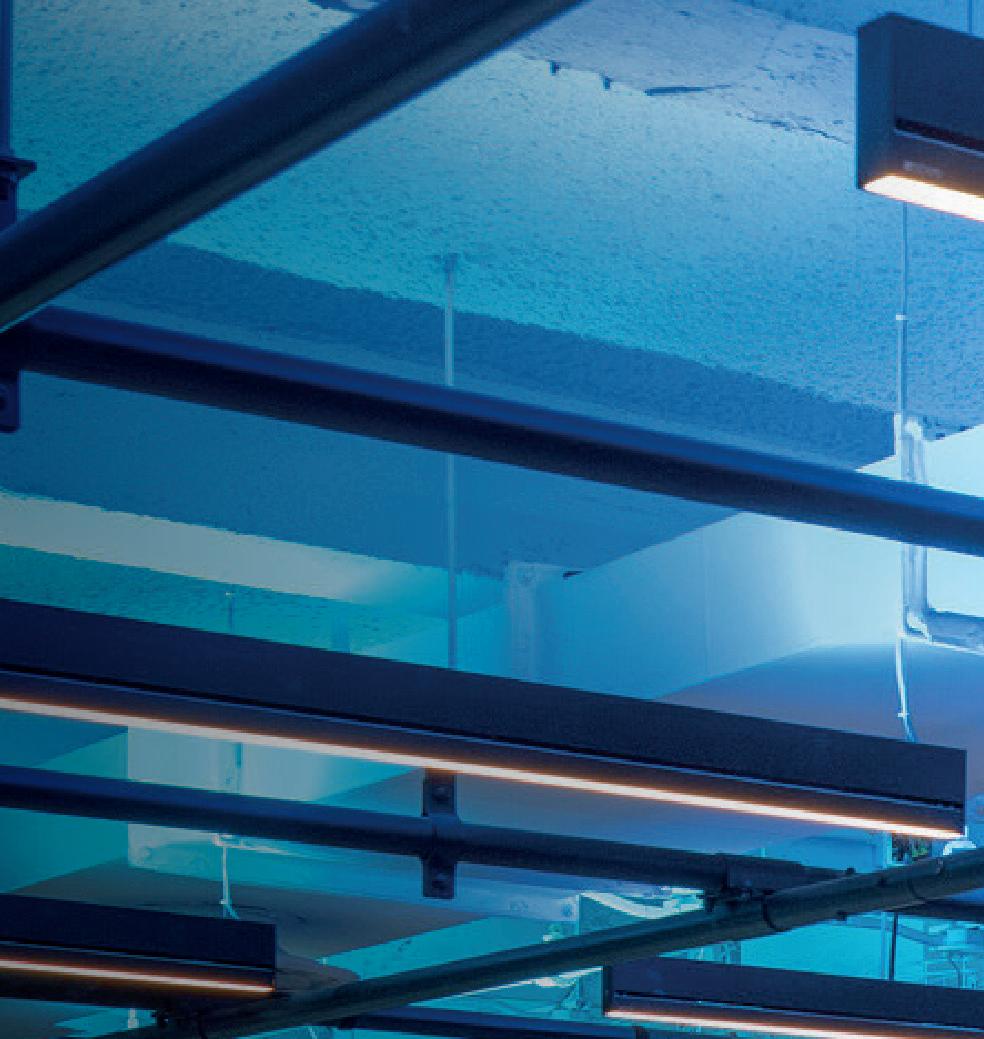
For one New York company, storytelling and experimentation are at the heart of an innovative new audio and lighting solution.
By AV Technology Staff




When TAD Associates (TAD) relocated its New York headquarters to a new site near Times Square, they sought to create a workspace that went beyond the idea of a traditional office—rather, it was to be a stage for storytelling, experimentation, and innovation. A leading AV consultancy, TAD empowers businesses to create digital experiences that connect, support, and inspire people through interweaving technology, architecture, and design.
The team at TAD envisaged the new office as The Stage: a blank canvas on which different creations can take form and ideas can be trialed. RAIL by KSCAPE, an all-in-one architectural lighting and audio solution from Italian professional loudspeaker brand K-array, proved to be a crucial element in bringing this vision to life.
TAD worked with architects Model Practice to imagine a high-performing, yet flexible space. “Our ambition was to have an office that worked for us and the things we want to do in a flexible and coherent manner,” Daniel

Pittman, TAD partner recalled. “This is the brief we shared with Model Practice, who worked closely with us to design this concept.”
A research lab for prototyping and a space to hold events, the new TAD workspace required a unique design approach. “We thought about the space like a stage,” Christopher Lee, partner at Model Practice explained. “Modular furniture, fittings, and other elements can be deployed, and the space can be divided to serve different purposes. Introducing a ceiling grid of KSCAPE RAIL elements allowed us to bring lighting and audio into play whilst reducing visible systems and maintaining the utilitarian aesthetic.”
With a sleek form factor, tunable lighting, and high-performance audio, RAIL represented an easy-to-incorporate solution that fulfilled many of TAD’s major technology requirements in a single device. With RAIL, TAD can benefit from lighting and color temperature control, as well as circadian syncing features, creating
The ceiling grid encompasses not only lighting and audio from RAIL, but also data reels, power supplies, and room-dividing curtains, allowing the TAD team to construct or deconstruct ever-changing spaces.

unique environments and zones that serve multiple purposes. Working closely with the team at K-array, TAD also had emergency lighting built into the RAIL fixtures, providing a complete corporate lighting solution without additional ceiling fixtures and fittings.
Over 100 units of 1.2m-long RAIL devices were installed in the custom ceiling grid system at TAD, both with and without integrated loudspeakers. The workspace is an open environment, with desks around the edge and an empty stage in the center for experimentation. The ceiling grid is pivotal to the functioning of the space, encompassing not only lighting and audio from RAIL but also data reels, power supplies, and room-dividing curtains, allowing the TAD team to bring utility to any point on the floor and construct or deconstruct ever-changing spaces. Sound and light from RAIL remain a constant.
Whilst the open workspace at TAD is largely flexible, three permanent zones exist: a studio workspace for employees, a gallery for showcasing the work of TAD and its clients, and the lab space for experimentation and research and development. The RAIL lighting control through Casambi enables TAD to redefine the zones as required, whether switching to brand colors for visiting client
demos or syncing the lighting with outdoor conditions to provide optimal working conditions that promote employee wellbeing. Two further conference rooms also feature fully integrated RAIL devices, eliminating the need for adding ceiling loudspeakers and ensuring a coherent user experience across the entire TAD premises.
24 Rumble KU44X subwoofers along with 12 channels of K-array Kommander amplification were deployed to complete the sound system. “We wanted to do the sound



properly and ensure we could cater for all kinds of events, so we worked with K-array to select subwoofers that would provide good, high-performance coverage for each of the zones,” Tom Sauter, TAD’s systems engineer for the project explained. “The smaller package of their Rumble subwoofers gave us flexibility in placement, and each unit was painted to match the ceiling, so the units remain discreet.”
Ease of control has proved to be a key benefit for the TAD team in their experience of KSCAPE RAIL. “With Casambi, users can set up zones for events or simply control the day-to-day performance of the lighting,” Sauter continued. “We’ve integrated the RAIL and Casambi controls into our internal app here at TAD, as well as making the technology accessible from an internal touchscreen and self-powered light switches at the points of entry, ensuring everyone can easily enjoy the functions of the space.”
The team at TAD are already investigating the development of a RAIL integration with Show Control software. This will enable RAIL lighting to respond to digital signage and sensors in the space, further pushing the boundaries of architectural lighting thanks to KSCAPE’s open and innovative technology, and bringing the benefits of a theatrical lighting system to the space without the usual physical wiring constraints.
Besides the flexibility and functionality of RAIL, TAD’s employees also testify to the overall look and aesthetic that RAIL has brought to the space. Aside from the endless lighting possibilities, the audio quality—even when pushed to high volumes—has been a source of positive remarks throughout the office.
“The creation of the utility grid has given us the complete flexibility and performance we need, whilst the alignment with K-array throughout the journey has been excellent,” Pittman confirmed. “The result is a space that is comfortable and fit for both every day and more complex use. A lot of thought went into crafting a space that is truly functional yet simple, and with the right technology from KSCAPE and RAIL, we’ve achieved this.”

The Stage at TAD comprises three permanent zones: a studio workspace, a gallery for showcasing the work of TAD and its clients, and a lab space for experimentation.
Our ambition was to have an office that worked for us and the things we want to do in a flexible and coherent manner.
Daniel Pittman, TAD partner

EDUCATION
Studentsandinstructorsseek aninnovativeandequitable campus Mersivecollaboration technologyenablesbarrierfreeideasharing,enhancing education,increasing admissions,andattracting skilledfaculty
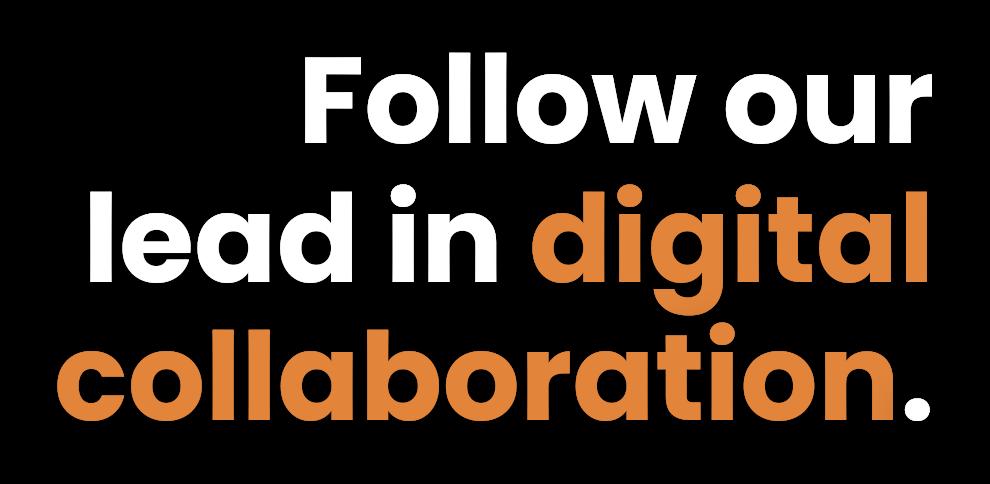
connectorsandcomplex setups Justopenawebpage andenteracode,allowingyou tofocusonwhatmatters withouttechstartup distractions.

Mersiveenhancespatient engagementbycreating spacesforseamless interactionbetweendoctors andpatients Witheffortless screensharing,healthcare providerscanconcentrateon patientcareratherthan technologyissues


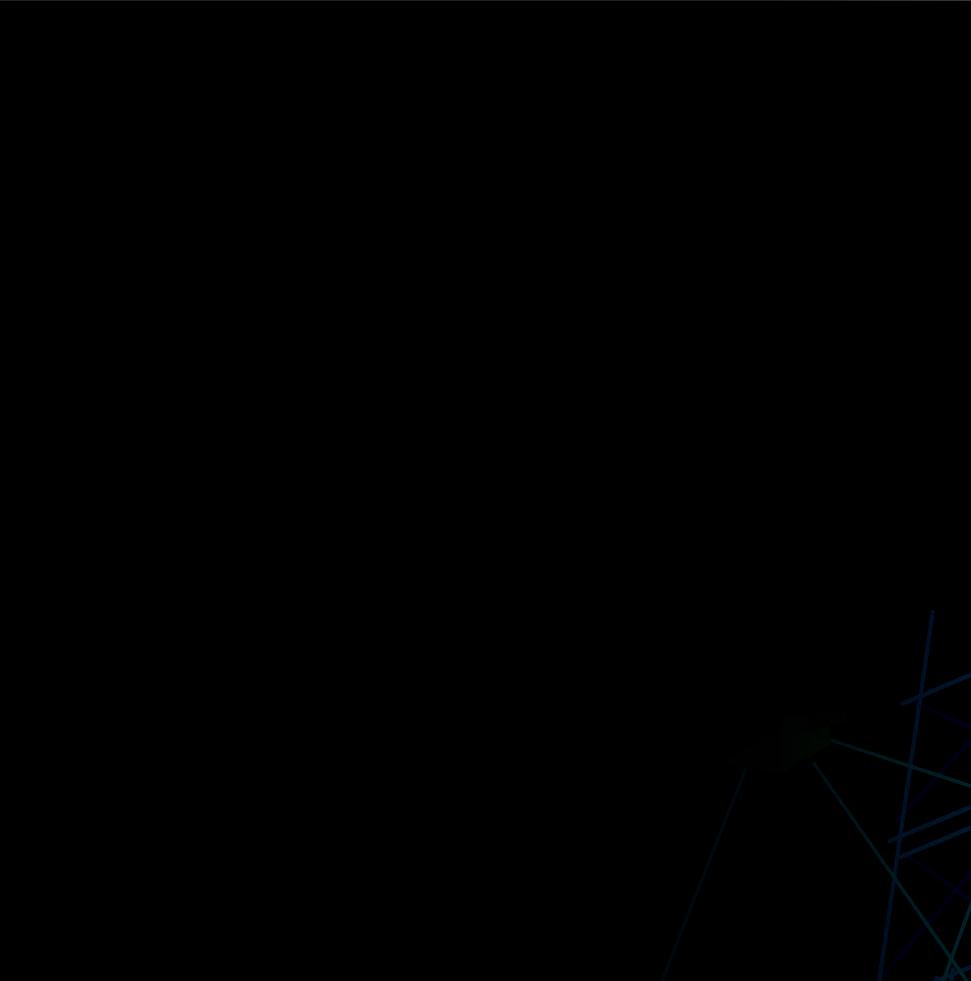


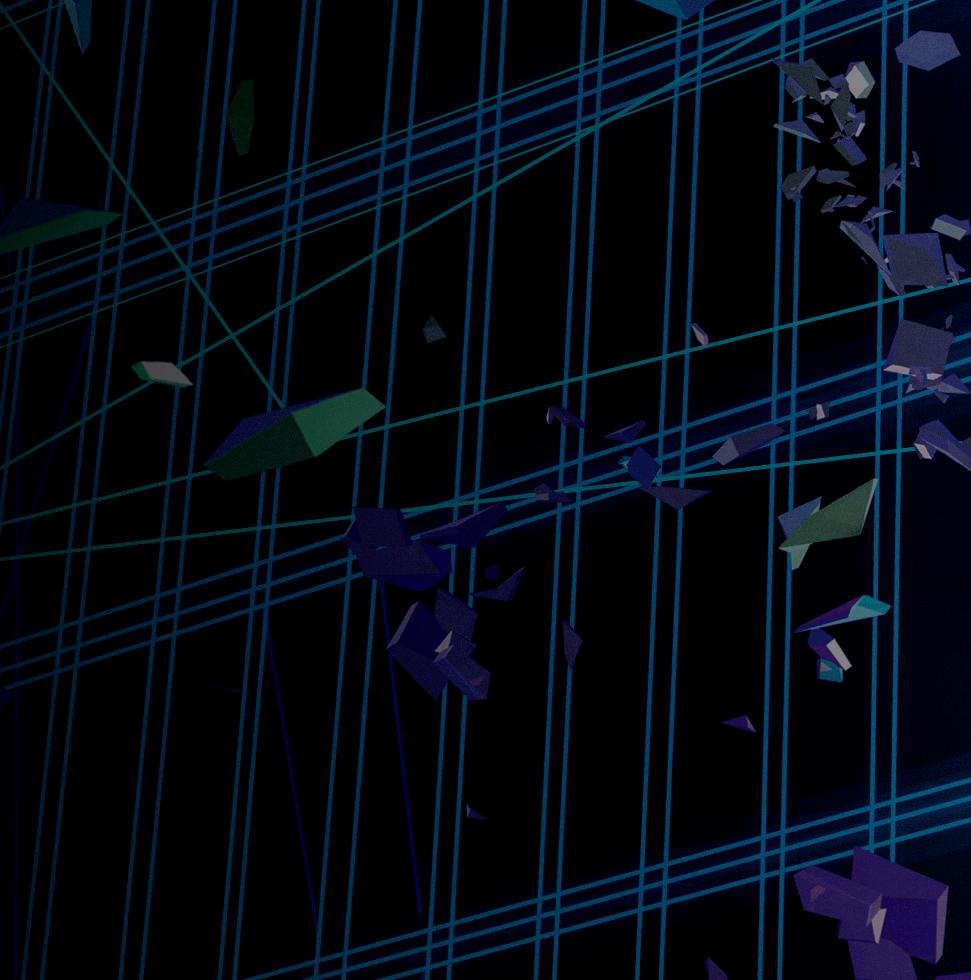

By Cindy Davis and Macy O’Hearn
No matter the location—the office, a hotel, a satellite office, or a home office—the user experience is paramount. First and foremost, meeting and collaboration technologies need to be easy to use. Next up are speech intelligibility and video clarity.


We asked AV/IT industry thought leaders from 47 manufacturers to share how technologies are helping to reshape the workplace and create an environment that is easy to use.

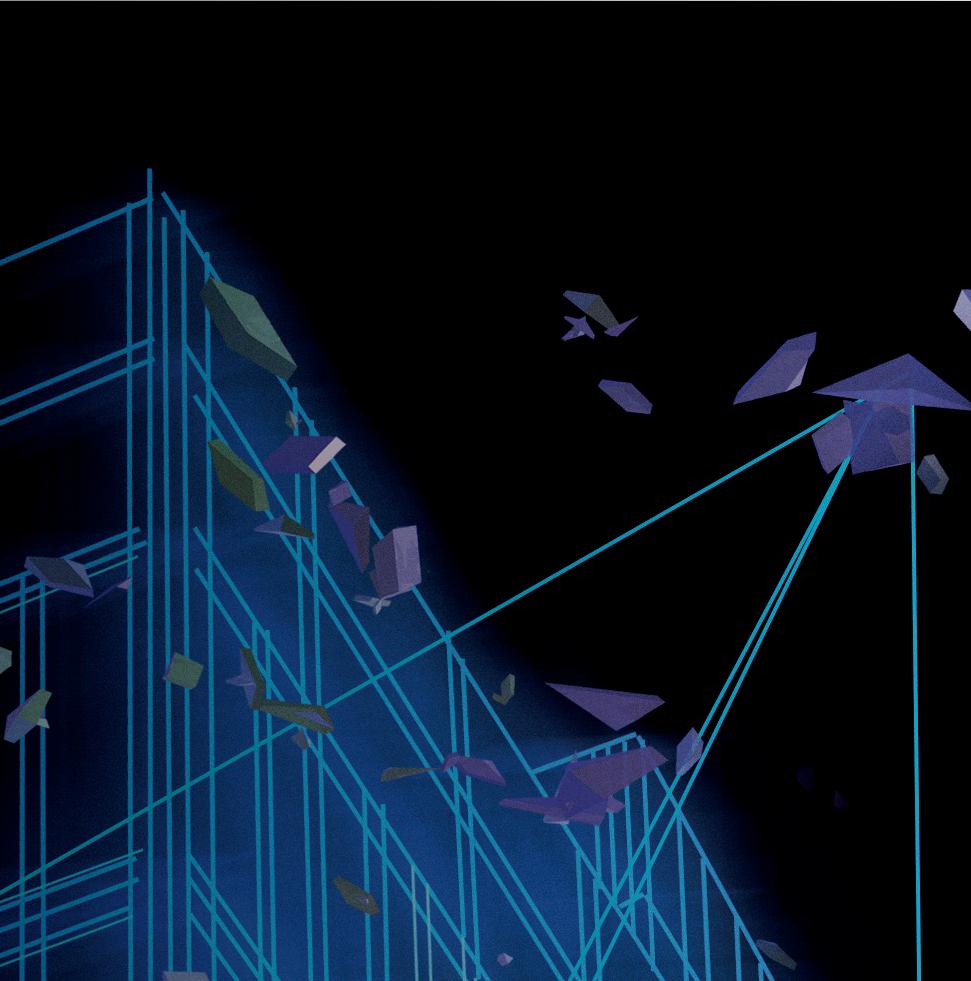









PERRY SUN Product Marketing Manager Atlona
In 2025, hybrid working should continue to be a general fixture for corporate cultures. However, it is expected that return to office will gain momentum, as more companies firm up their policies mandating workers be on site. As a result, offices will be considerably more populated, with the potential need for more meeting spaces—along with the technology within that facilitates collaboration and productivity.
Workers returning to the office are going to expect—and demand—the convenience of simple content sharing and communication that they’ve enjoyed at their home offices. Meeting rooms must be equipped with AV systems that are effortless to operate for users. Additionally, systems have to be duplicated across many rooms, necessitating solutions that are cost effective to acquire and integrate.
User experience will continue to predominate in 2025, with a particular focus on USB-C connectivity and USB integration. For meeting participants, this simplifies to just a single USB-C cable connection to a laptop, which then triggers system readiness so a meeting can begin promptly. Many Atlona AV products make this possible through automatic input selection and display control, the latter of which was a groundbreaking feature first offered by Atlona in an AV switcher.
The more AV technology is implemented in workplaces, the greater the need for awareness about energy consumption—and, by extension, sustainability—will be. Atlona products can help minimize power usage in meeting rooms by automatically powering down a display when a user disconnects from the system. They can also be used with occupancy sensing to further enhance display control automation. And when occupancy sensing is integrated with a control system to regulate room functions such as lighting, additional energy savings can be realized.

LARRY DEFAZIO Regional Sales Manager
- East, Professional Display Solutions
Sony Electronics
Today’s modern workplace has become synonymous with the hybrid model—a blend of remote and in-office work. Sony stands at the forefront of this evolution, offering a comprehensive suite of professional AV products tailored to meet the demands of this dynamic environment. Our flexible range includes crystal-clear and reliable displays, highresolution projectors, and PTZ cameras with Auto Framing—all designed to enhance collaboration across various settings. Sony’s digital signage and videoconferencing solutions, powered by our advanced System-on-a-Chip architecture, integrate effortlessly with existing AV needs, supporting the seamless transition to hybrid workspaces.
Another element that enables the modern workplace is compatibility. Sony’s products allow for smooth operation within expansive systems, emerging technology, and solution partners that align with what our users demand. Network control and cloud-based management are standard features, simplifying the tasks of AV/IT teams. On top of that, our solutions are designed to work in harmony with popular collaboration platforms, streamlining the implementation process for AV managers.
Additionally, reliable support is a crucial component for a smarter workplace. That’s why the Sony BRAVIA Professional Display advanced replacement warranty minimizes downtime, while our comprehensive training resources empower both end users and AV professionals to fully leverage our technology. Our commitment extends to fostering partnerships with technology solutions, ensuring our products complement a wide array of third-party tools. This collaborative approach guarantees that our offerings meet diverse needs today and tomorrow.
Innovation at any company is driven by valuable customer insights. At Sony, we continuously refine our products and provide firmware updates to address the ever-changing landscape of AV and IT, ensuring our technology not only meets but anticipates the future needs of the modern workplace. Through all these avenues, Sony is dedicated to empowering communication and delivering cutting-edge, user-friendly technology solutions that propel businesses forward in the hybrid world.

TYLER TROUTMAN Strategic Market Development Shure
The modern workplace is in constant flux, requiring organizations to adopt an evolving rotation of tools and technologies to address changing workplace needs. In 2025, it will be crucial to be prepared for shifts to the way we work, particularly as more and more organizations push for employees to return to an in-person office schedule. As these changes take shape over the course of the year, Shure is delivering highquality audio solutions that enable collaboration regardless of physical location.
Unified communications platforms like Microsoft Teams and Zoom are evolving to offer even more seamless transitions between everyday operations like videoconferencing, chat, and file sharing. The use of these conferencing platforms combined with AI productivity tools enable efficient communication, and Shure is driving communication capabilities with solutions that ensure clear and accurate audio capture.
The new IntelliMix Room Kits are an example of a product that offers a comprehensive solution for effortless deployment across small to large meeting rooms. Many of today’s all-inone solutions do not yet adequately solve the acoustic challenges of our modern meeting rooms. The IntelliMix Room Kits are a complete Microsoft Teams Room system, ensuring the best audio quality for Teams Rooms, plus AI-powered Huddly video cameras to optimize the video experience in meetings. This comprehensive solution is set to transform the modern meeting experience by incorporating audio intelligibility, AI-driven tools, and video capture in an all-in-one solution to meet today’s workplace needs.
Our commitment at Shure is to deliver innovation in audio, and this means continuously investing in development to push the boundaries of what’s possible in communication. Organizations must recognize the need for better collaboration tools and give employees access to conferencing technology that both enables clear communication and drives productivity—ultimately improving the workplace collaboration experience in the new era of work.

DAN ROOT Head of Global Strategic Alliances Barco
While organizations have shown that remote work is feasible on a large scale, the C-suite has struggled to establish consistent hybrid work policies. Despite significant investments in workspaces and collaborative technologies, employees are not willing to give up the flexibility they have become accustomed to, revealing that a one-size-fits-all approach to the employee experience is unrealistic.
Rather than shifting from one return-tooffice (RTO) policy to another, a more effective strategy is to tailor work arrangements based on organizational, regional, and employee needs. If your back-to-office initiatives are failing, the issue may lie within your company culture, not your employees.
Hybrid policies have not met many companies’ expectations. In fact, 74 percent of companies have revised their hybrid work policies multiple times since 2020. Are senior leaders being torn between the desire for inperson collaboration and the need for modern work flexibility?
To achieve the right balance, leaders must recognize that the decision is not about what is easiest or most cost effective. Using outdated technologies to drive policy decisions does not resonate with the workforce. Leaders need to understand their employees’ daily experiences to provide hybrid technologies that enable flexibility and drive innovation.
Hybrid work offers greater potential than total RTO mandates. Studies show that employees who work three days in the office and two days at home perform better, are more satisfied, and have higher retention rates than those who work entirely in the office.
However, successful hybrid work routines require time and intention. Rushed implementations often fail, as decision makers may hastily follow competitors’ leads. Organizations need to rebuild their culture around hybrid work, considering each team and individual’s technical and human needs. This requires an involvement of all stakeholders, including facilities, IT, operations, and HR. The nuances of hybrid work need to be addressed with equally nuanced policies and technology.

DAN HOLLAND Marketing Manager
IHSE USA
Media and entertainment organizations worldwide are now taking advantage of Display Management Systems (DMS) to integrate keyboard, video, and mouse (KVM) over IP technology to run their businesses and communicate between staff, customers, and external agencies. They recognize the benefits of DMS for KVM-over-IP and are rapidly embracing them to gain efficiency, lower costs, and greater flexibility in their day-to-day operations.
At IHSE USA, our future focus is on DMS for KVM-over-IP, which enables new opportunities in the way AV and IT businesses can operate and work together. Both technical and nontechnical users can connect simply and easily to remote computers, allowing access to applications normally limited to direct connections or internal-only facility KVM switch systems. While the advantages of DMS for KVMover-IP approach are clear, it does represent a significant departure from previous approaches and injects an entirely new set of security issues. With IHSE’s DMS, the signals passed between the operator and computer retain full integrity but, most importantly, provide total system security
The main difference between an IHSE DMS and a classic KVM-over-IP system is it can be configured to support multi-monitor setups, multiviewers, and wall processors as well as support configurable Extended Display Identification Data (EDID). IHSE also incorporates multiple layers of security supporting LDAP or Active Directory, as well as two-factor authentication (2FA).
Today, and into the future, there will be an increased need for computer-based automation, testing, and simulation, which increases the importance of improved workflow to increase the efficiency of a company’s staff. Taking advantage of IHSE’s more than 40 years of technology leadership, all IHSE systems provide resolution compatibility across different types of computer operating systems. IHSE continues to offer product solutions specifically designed for control room display management systems used in professional A/V, broadcasting, air traffic control, and industrial and government/military applications.

ALAN YOUNG Chief Product Officer and Chief Information Security Officer
Mersive Mersive Solstice features operational analytics that give valuable feedback to AV/IT teams, allowing them to make informed decisions when planning space and technology. We’ve found it fascinating that Solstice users report that analytics show users are sharing only one piece of content at a time. While multi-share—which allows multiple users to share screens simultaneously—is a reality, it’s simply not something users are harnessing to its full potential… yet.
We can look at the history of meetings to see why this might be the case. Since the earliest days of overhead projection, our meeting culture has been a one-to-many dynamic. Someone is always leading a group, pushing out information to everyone in attendance. This dynamic made sense in the early days of work technology.
Now, however, ideas flow in both directions, and workers are accustomed to having many windows, browsers, and screens open at once, deftly managing it all. As modern workers, we have developed the ability to “context switch” and have come to expect this capability from our devices. So why don’t we harness this same utility in our collaboration platforms?
The go-to one-to-many dynamic of today’s work environment is prohibiting that evolution and slowing the potential benefit of instantaneous and collaborative idea-sharing. It starts with physical space: There is no rule, for example, that says that meetings have to take place in a conference room where one person is presenting one thing.
Less expensive and easier to set up, huddle spaces allow smaller groups to share ideas, eschewing the traditional presentation and facilitating more nimble, inspired, and evolved collaboration. Imagine a smaller space where multiple users’ content is displayed, ideas flow, and barriers are broken. This is the future of the workplace, where many-to-any collaboration allows inspiration to happen at the speed of now.

STEVE WINGO Manager, Technical Applications Engineering Sennheiser
The modern workplace has evolved greatly in recent years and has caused a giant shift in culture, space planning, and technologies alike—including workplace trends. A great deal of this shift has to do with modularity. Recently, I was in a workspace in New York where only a few meeting rooms had doors on them. The cabinetry was on wheels, and the curtain walls between spaces were completely mobile, providing the ability to create your own space in any part of the building. It was like looking into the future in a modular way—eradicating limitations on how employees can utilize the workspace.
As it pertains to workplace trends, hybrid and remote work are here to stay for many industries. With that comes ensuring that meetings are being held effectively from all corners of the world, and that whoever is
“Hybrid and remote work are here to stay for many industries.”
— Steve Wingo, Manager, Technical Applications Engineering Sennheiser
online is having a unified experience. Take equitable sizing, for example: Many cameras do tiling these days, so if you have 10 people on one screen in a meeting, everyone is equally sized. It’s important that one person’s tile doesn’t appear to be twice or thrice the size of another’s. Current technology is able to incorporate AI to ensure that not only is everyone equitably sized, but that if you were to move around the room while on camera, you would be properly followed within your given frame.
Being a part of Sennheiser, I believe that audio is the most important factor in current technology and the modern workplace. Having bad video on a call isn’t ideal, but it is workable. Having bad audio can cost the company time and money because the conveyance is all verbal. Good audio is imperative.
Overall, it’s an exciting time for advancements in the modern workplace, and we at Sennheiser look forward to continuing to help customers future proof their office with innovative audio solutions.

DANA COREY General Manager and Senior Vice President, Sales Avocor
The coming year promises a continued evolution of the workplace. We predict a significant shift towards experiential office design; this means less emphasis on assigned seating and more on activitybased working, empowering employees to choose the environment that best suits their needs.
Display technology will play a crucial role in enabling this transformation, with both interactive and non-interactive displays at the forefront of this trend. Displays are no longer just presentation tools, they are the hub of collaboration and communication. The right display can help facilitate dynamic idea sharing, annotation, and visual collaboration, while fostering engagement and accelerating the creative process.
In huddle spaces, displays can be used for quick stand-up meetings, project updates, and impromptu brainstorming. They can also serve as digital whiteboards, allowing teams to capture and share ideas. Beyond collaboration, they enhance communication and wayfinding, displaying all types of real-time information to users.
Seamlessly integrated collaboration tools, such as interactive displays and videoconferencing systems, are essential for bridging the gap between remote and in-office teams. The workplace of the future will be less about where work is done and more about how it’s done, with the emphasis on purpose, connection, and empowerment. Display technology is a key component in bridging the gap between the physical and digital worlds.


MICHAEL FERRER Senior Director of Solutions Sales Sharp
The modern workplace has transcended the traditional office. It is now a fluid environment encompassing smartphones, laptops, cloud content, and both virtual and in-person interactions. Whether working from home, a dedicated office, or remotely, we seamlessly transition between video calls, chat, email, and face-to-face meetings. Leveraging various tools like Microsoft Teams, Zoom, email, chat, and even social media, we communicate, share ideas, are more productive, and, ultimately, solve business challenges.
The integration of AI into communication and meeting room technology is accelerating, streamlining tasks such as taking meeting notes, tracking action items, intelligent camera control, and voice recognition, thus creating smarter meeting rooms and more engaging meeting experiences.
Today’s workforce spans four generations, from baby boomers to Gen Z, resulting in varying levels of tech proficiency. A common request we receive is to help simplify the meeting room experience. The ease of conducting a video meeting at a personal desk should translate seamlessly to the conference room.
The rise of USB-C has simplified connectivity, with many laptops relying solely on this port. Sharp’s professional displays now include USB-C inputs, built-in USB hubs for cameras and soundbars, and 65W charging capabilities, making conference room plug-and-play setups effortless.
DvLED displays are replacing traditional LCD video walls and projectors, offering large, seamless, and bright displays for immersive presentations. Ultrawide 32:9 aspect ratio dvLED screens are also gaining popularity, providing flexible display layout options—from a single image, side-by-side, or even 21:9 MTR Front Row configurations. This allows presenters to tailor the content and various meeting formats, enhancing engagement and efficiency.
Looking ahead, workplace technology will prioritize simplicity, efficiency, and enhanced collaboration, ensuring hybrid teams can work smarter, not harder.

SOTARO NISHIDA Vice President of Business Solutions Yamaha
As hybrid work becomes the norm, the importance of clear, reliable audio has never been greater. Seamless communication is now an expectation, and any technical hiccups can disrupt productivity and collaboration. To meet these demands, organizations require audio solutions that are easy to manage, integrate seamlessly with existing IT infrastructures, and support advanced technologies like Dante and NDI.
A critical yet often overlooked component of an effective AV setup is the network switch. In conference rooms and large-scale installations, the right switches serve as the backbone of a reliable audio system. They simplify deployment, optimize bandwidth management, and ensure secure power distribution through Power over Ethernet (PoE). By automating these functions, modern switches alleviate the burden on IT teams, allowing them to focus on higher-level tasks rather than troubleshooting connectivity issues.
Beyond network infrastructure, automation is also transforming system design. Automated planning tools enable teams to create professional-grade audio systems without requiring specialized acoustic expertise. By inputting room dimensions and intended use cases, users receive tailored equipment recommendations and a 3D visualization of their setup. This streamlined approach makes AV planning more accessible, reduces setup time, and ensures that systems are designed to meet the specific needs of an organization.
Looking ahead, the future of workplace audio technology is centered around automation and integration. Smarter tools are simplifying installation and management, enabling teams to concentrate on collaboration rather than technical challenges. Cloud-based solutions, automated system planning driven by user data, and remote monitoring capabilities are making workplace AV more intuitive and adaptable. As these technologies continue to evolve, organizations can expect even greater efficiency, flexibility, and audio quality in their hybrid work environments.

JIM JENSEN Senior Category Owner, PTZ and Remote Systems Panasonic Connect
A recent Forbes article stated that five in ten U.S. employees have remotecapable jobs, and most of these workers “expect and prefer hybrid work.” As hybrid work continues in 2025, companies must adapt to meet the needs of their employees. This includes creating facilities that are collaborative, technologically advanced, easy to use, and multifunctional for a wide variety of use cases.
Investing in collaborative technologies enhances the connectivity and engagement of hybrid teams no matter where they’re working. Panasonic Connect understands that when employees can choose to work from their desired location, engagement, burnout rates, and retention all improve.
Technology deployments in recent years have expanded the possibilities for workplaces to maintain a well-functioning hybrid workplace.
“As hybrid work continues in 2025, companies must adapt to meet the needs of their employees. ”
— Jim Jensen, Senior Category Owner, PTZ and Remote Systems Panasonic Connect
ProAV solutions allow organizations to offer collaborative experiences to their employees, whether in-person or remote. Panasonic Connect’s technology suite plays a pivotal role in creating workplace environments that operate efficiently and encourage connection.
For example, the AW-UE160 PTZ camera incorporates advanced technologies that reproduce frame composition with high accuracy and flexibility for a more natural autoframing result to keep the speaker in focus and seamlessly monitor their movements around a given space. This enables dynamic views of
presenters and speakers in corporate scenarios while delivering clear, crisp content to remote employees or businesses, allowing them to feel involved regardless of where they are working. These cameras also mold to fit the needs of each space and can be mounted or placed on a tripod.
We predict that hybrid work will persist in 2025, and that we will see more companies adopting solutions that work together such as PTZ cameras, audio, and videoconferencing solutions to allow employees to work more collaboratively.




MATT MORGAN Regional Sales Manager, Corporate, USA South Ross Video
Rapid evolution of the corporate workspace is changing the way businesses communicate with each other. As organizations transition to remote and hybrid work models, live video has become an essential medium for teams to maintain connection and for organizations to connect with global audiences—even during unprecedented global events. Still, this also brings new challenges, and companies need to evolve to keep pace.
As companies create an increasing amount of live video content—from internal meetings to product launches and shareholder events—the standards for quality are increasing. Businesses are no longer expected to simply make video content, but to release it at a level that differentiates them from their competitors.
This is where getting the right tools and strategies will help. As companies ramp up their AV production, they require solutions capable of meeting increased demand while maintaining quality.
Corporate studios and event spaces should be more than functional; they should be flexible. From casual internal meetings to largescale global broadcasts, corporate workspaces today are expected to enable a range of use cases and accommodate a spectrum of users, from tech-savvy professionals to those with little AV experience. These spaces must also accommodate remote and in-person audiences.
These needs require the development of flexible, tailored solutions. Whether it’s a podcast, a webcast, or a large live event, the right AV technology and production workflows will help IT and AV teams deliver a smooth audience experience.
As corporations reimagine the way they work—with more flexible hybrid and remote workspaces—technology plays a key role in engaging corporate teams and elevating how companies communicate. Our solutions are scalable and intuitive, allowing businesses to confidently produce high-quality content, regardless of technical skill.

JOE DA SILVA Vice President of Marketing Extron
As enterprises and educational institutions continue embracing hybrid models, the AV industry is driving seamless collaboration, engagement, and efficiency. Over the past five years, our work environments have evolved significantly—from a swift pivot to remote work to a gradual return where hybrid work is now the norm.
This shift has prompted a reimagining of traditional spaces. Previously, meeting rooms prioritized capacity and basic AV infrastructure such as projectors, displays, and control interfaces. Today, organizations can design targeted, featurerich spaces tailored to specific job functions. These rooms focus on collaboration, both in-person and across distances, leveraging automation and user-centric AV technology. The result is a humancentered meeting experience, empowering employees—no matter their location—with tools that enhance connection and productivity.
First off, expect continued growth in AV solutions that integrate with multiple platforms (e.g., Zoom, Teams, et cetera). Demand for platform-agnostic AV systems will rise, reducing friction for employees navigating diverse collaboration tools.
Secondly, real-time hot-desking, room scheduling, digital signage, and interactive displays are transforming workplaces and campuses. These technologies offer live updates, wayfinding, and emergency alerts—delivering contextual, data-driven content based on space occupancy, interactive campus maps, and more.
And finally, 2025 will see sustainability continue to be a priority that influences purchasing decisions. Enterprises and institutions are seeking energy-efficient AV solutions such as autoshutdown and enhanced sleep mode features, low-power amplifiers, and e-waste reduction programs. Manufacturers are responding with eco-friendly processes that include sustainability, not only in the products they produce, but also in every step of their design, manufacturing, distribution, and eventual disposal.
Also in 2025, the fusion of culture, technology, and space design will continue reshaping how we work and learn—ushering in a future defined by flexibility, connection, and sustainability.

Chief Operating Officer and General Manager
Logitech for Business
The first workplace prediction for the coming year is that smart office tools will be non-negotiable keys to employee experience. Many factors make up the employee experience, including culture, leadership, recognition, career development, and wellness. Regardless of hybrid work or return to office, in 2025, employees’ experiences with their digital environment will be marked by smart office tools for desk and room booking. For example, Logitech’s workplace automation solutions offer realtime availability of meeting rooms, interactive maps, and building sensors to adjust the environment. In 2025, companies will use sophisticated data analytics to design and refine their hybrid work policies. Metrics like real-time desk and meeting room usage will be used to determine where financial and tech investments should be made for personalized and flexible work arrangements and real estate planning. Logitech Spot, for instance, provides space usage data for improved planning by organizations, as well as environmental metrics that impact employees’ health, cognitive function, and overall in-office experience.
The second prediction for the coming year is that environmental innovation that fundamentally redesigns core ingredients for climate-friendly products will continue to be rewarded. Consistent efforts to make key ingredients climate friendly—such as redesigning sustainable materials, reducing plastics, and smart software—will become more important. Last year, by applying our Design for Sustainability (DfS) principles, we transitioned Logitech’s video collaboration portfolio to be manufactured with next-life plastics, helping enterprise customers support their sustainability objectives. In addition to Logitech products reflecting post-consumer recycled plastic, some of our solutions like Logitech Spot also help companies consider suggested actions to reduce energy costs by monitoring environmental conditions.





JATAN SHAH President QSC
Organizations are increasingly prioritizing intelligent spaces that enhance collaboration, energy efficiency, and overall workplace experience. As companies reassess their real estate strategies, there is a growing emphasis on optimizing underutilized spaces through technology-driven solutions that foster seamless communication and sustainability.
Advancements in technology, including sensors and AI-assisted workflows, are making hybrid work setups increasingly efficient and seamless. These innovations enable spaces to adapt in real-time, supporting a blend of in-person and remote collaboration while enhancing productivity and user experience.
Scalable and adaptive technology is becoming essential for cost-effective integration, ensuring workplaces can evolve alongside shifting business needs while maintaining long-term value. The intersection of data, automation, and smart infrastructure is enabling environments that respond dynamically to occupant behavior, improving both operational efficiency and user experience.
The ability to harness data from built environments—ranging from space utilization to energy consumption and user interactions— is unlocking new opportunities for workplace optimization and strategic decision-making. By leveraging these insights, organizations can create environments that support productivity, enhance employee engagement, and drive more sustainable business practices. This evolving landscape underscores the importance of solutions that drive efficiency, engagement, and innovation—shaping the future of work.
“Advancements in technology, including sensors and AI-assisted workflows, are making hybrid work setups increasingly efficient and seamless.”
— Jatan Shah, President QSC
“Software vendors are now delivering powerful tools that transform how digital content is created, managed, and experienced.”
— Travis Kemp, Vice President of Product Management Korbyt

TRAVIS KEMP Vice President of Product Management Korbyt
Employers today are navigating demographic shifts and evolving workforce dynamics that demand new tools and strategies. The rise of hybrid work and return-to-office mandates has accelerated the need for flexible, frictionless solutions that provide a consistent experience—whether employees are in the office, at home, or on the go.
At the same time, workplaces are undergoing a cultural transformation as Gen Z and younger employees make up a growing share of the workforce. As digital natives, they expect workplace technology to be intuitive, seamless, and engaging—just like the tools they use in their personal lives. These expectations are driving innovation in workplace experience platforms, which enable organizations to modernize communication and create dynamic, tech-driven environments that enhance productivity and engagement.
Unsurprisingly, AI will play a pivotal role in shaping workplace experiences in 2025 and beyond. While many early AI-powered solutions were more marketing hype than true innovation, that’s changing. Software vendors are now delivering powerful tools that transform how digital content is created, managed, and experienced, while also optimizing space booking, utilization, and overall workplace organization and workflows.
Finally, experiential signage is also reshaping how people interact with physical spaces, blending high-impact visuals, interactive content, and sensory-driven design to create more engaging environments. At ISE 2025, the Esports Arena exemplified this trend, showcasing immersive displays, dynamic lighting, and spatial audio to elevate audience engagement. Beyond entertainment, these technologies are influencing workplace trends—transforming offices, lobbies, and common areas into more stimulating or calming spaces that enhance both productivity and well-being. These solutions will gain momentum as employers seek innovative ways to create healthier, more productive work environments.
EFFI GOLDSTEIN
President, HDBaseT Alliance
Straight out of ISE, it’s clear that everyone is working to provide that universally recognized “best videoconferencing solution,” but in truth, there is no one-size-fits-all product to solve such a highly subjective challenge. User habits and expectations are constantly evolving, and meeting spaces and workflows are transforming rapidly. AI is now assisting participants, summarizing discussions, and following up on tasks, reshaping how both inperson and remote communication and collaboration is conducted. However, one thing remains unchanged: fulfilling end-user expectations requires a professional system design that can ensure seamless integration of space, equipment, and connectivity infrastructures. Without careful design, even the most advanced tools may not function as intended.
On the connectivity side, as more meeting room peripherals become USB3 enabled, selecting the right signal distribution solutions is critical. The wrong choices can lead to performance downgrades that can diminish the quality of even the best equipment. With dozens of new HDBaseT-USB3supported products hitting the market, we can expect to see significant improvements in meeting spaces, including enhanced connectivity reliability, and higher-performance plugand-play collaborative environments.


TOM PICHE
Product Manager
Epson America
The workplace has undergone significant changes in recent years, and this year is no exception. With many companies initiating return-to-office mandates yet still needing technology to support employees when they are remote, display technology is playing a critical role in bridging the gap between these two workstyles.
Technology integration into hybrid meeting rooms is essential, and is driving the demand for large, flexible, and user-friendly displays. Display sizes must accommodate people, content, and collaboration tools, while remaining simple to operate. Projectors stand out, as they deliver versatile image sizes from a single device and can disappear when not in use. This is key for virtual meetings where visibility and inclusion are vital. Additionally, modern workplaces require display technology that integrates seamlessly with devices, tools, and even furniture. Accessible and intuitive solutions are crucial to ensure consistent meeting experiences, regardless of the user’s familiarity with technology.
AI and automation are also changing the technology that is powering today’s workplaces. For example, more automation tools are being designed to simplify projector installations and maintenance for integrators, IT teams, and end users. Additionally, AI-driven features—like automatic voice recognition upon entering a room and real-time translation—are set to transform how meetings are conducted now and in the future.
As innovation continues to impact our daily lives, workplace environments must evolve to support employees effectively. In meeting rooms and beyond—sharp, adaptable images from a single device that seamlessly connects with other technologies are essential for workforce success.

JOEL MULPETER Director of Product Marketing Crestron
As Crestron’s Brad Hintze noted in the most recent edition of our magazine Smarter Spaces:
“Following years of chasing a perfected hybrid working model, many organizations are now considering mandatory office attendance. For many, it’s a major change as many employees who have built their recent work lives around remote and semi-remote or hybrid working will eventually be required to attend the office full time in the near term. “
We’d already begun to consider this trend— when an employee is required to split their time between home and headquarters, making the transition as frictionless as possible and keeping the in-person experience as engaging and productive as the remote office become top priorities.
We had written about this in a previous edition of Smarter Spaces: “Designers are rethinking traditional paradigms to create hybrid conference rooms that work for everyone—in person and remote—which means designing for the camera as much as the people in the room. It also means rethinking that rectangle. We have to design so everyone has eye-to-eye contact with remote participants and any displayed content. But we can’t lose what we know about in-room collaboration that works, which includes everyone in the room being able to see one another as well.”
Visual AI programs can go a long way toward ensuring that cameras are always attuned to a speaker or presenter, but thoughtful design, including changing the room orientation and implementing curved or trapezoidal conference tables, can help guarantee the best results. It’s also vital to ensure the right lighting and shading solutions are deployed, and that user interfaces are designed to be as intuitive as possible.
All of this demands that integrators work closely with the team designing the physical office. That’s why it’s so important to involve a technology professional early in the design process and facilitate discussions with end users in order to bring the right technology into the mix.

MEGAN ZELLER Senior Director, Business Development Peerless-AV
As we proceed into 2025, the ongoing evolution of hybrid work models will profoundly impact workplace design, culture, and technology. One of the most notable trends is the increasing reliance on dvLED video walls, which continue to be seen as a central technology in the modern hybrid workplace. These large, high-definition displays offer a unique combination of flexibility, scalability, and immersive experiences that support both in-office and remote teams.
dvLED video walls will be a key part of how companies will continue to embrace flexible, adaptable spaces, enabling companies to transform a single space for a variety of purposes. Whether it’s used for interactive presentations, data visualization, or virtual team meetings, the flexibility of dvLED systems allows company spaces to be collaborative hubs.
As employees continue to work across a hybrid model, personalizing the office experience becomes even more important. dvLED video walls can contribute to this by displaying personalized content such as meeting schedules, employee recognition, and real-time updates that enhance the sense of belonging. Additionally, effective communication is more critical than ever as workspaces continue to evolve within the hybrid model. dvLED video walls will play a central role in internal communication, helping to create an environment where information is delivered seamlessly to everyone, whether they’re in the office or working remotely. The ability to display high-quality video feeds, live updates, and multimedia content on a grand scale will ensure that all employees stay informed and engaged, contributing to a more unified company culture.
Looking to the future, companies will continue to invest in technologies that can scale and evolve with their needs. The modular design of dvLED video walls and their ability to integrate with a variety of systems make them a future-proof investment. As hybrid work models continue to evolve, these video walls can be easily expanded, upgraded, or reconfigured to meet new demands.

JERRY BERGER Consultant Liason Absen
In the coming year, the dynamics of the workplace will continue to evolve, influenced by a blend of cultural shifts, space planning innovations, and technological advancements. Central to this evolution is the growing emphasis on hybrid work environments. Organizations are increasingly adopting flexible work policies that accommodate both remote and in-office work, prompting a reevaluation of physical office spaces to foster both functionality and well-being.
Technology is playing a pivotal role in bridging the gap between physical and virtual workspaces. We are seeing a rise in the integration of sophisticated AV solutions that enhance collaboration across dispersed teams. This includes everything from high-quality videoconferencing systems to AI-enabled augmented reality smart glasses that allow real-time participation from all team members, regardless of location.
Moreover, workplace culture is undergoing a significant transformation. There is a strong movement towards creating more inclusive environments that support a diverse workforce. This cultural shift is not only about installing ergonomic furniture or offering flexible hours; it’s about cultivating an ethos of connectivity and empathy, enabled by technology that supports varied communication and collaboration styles.
Spatial planning, too, will see innovative approaches as businesses attempt to make the most of their real estate while accommodating flexible work arrangements. We can expect more modular office designs with movable walls and multipurpose spaces that can easily be reconfigured according to the day’s needs or the nature of the work being done.
As we look ahead, the intersection of technology, culture, and space planning will define the modern workplace, making it more adaptable, efficient, and inclusive. This holistic approach not only enhances productivity but also ensures that employees feel valued and connected, regardless of where they are working from.
CONNOR PETIT Associate Product Marketing Manager
Vaddio and Luxul
In the coming year, flexible workspaces are going to be essential. Offices are reducing their square footage, requiring them to maximize the space they have and make it work for a variety of employees—ones that are always in the office, and ones that work from home.
The conference room as we know it is not just for in person meetings anymore; it needs to serve the demands of hybrid meetings. Remote workers need to be seen from the far end of the room as well as view everyone in the space. Audio considerations are important as well, as both sides must be able to clearly hear each other. Additionally, many workers are utilizing conference rooms to take oneon-one video calls. Spaces that have been used primarily for meetings and sessions with multiple participants in the past have become useful for privacy in a hybrid workforce, so outfitting meeting spaces to work well with video calls is going to be increasingly important.
We’ve also seen a trend towards workers moving their devices to the network, increasing flexibility for the user. Once the device is online, signals can be sent anywhere, allowing it to be remotely controlled from home. Closed office systems are becoming a thing of the past, and moving your AV infrastructure to the network is more crucial than ever.
Hybrid work is here to stay, and with that remote meetings have increased.
Conference rooms and media spaces need to adapt to be flexible to all sorts of needs, and we at Legrand are excited to be part of the transition in modern workplaces.


STEVE SAMSON Director of Vendor Partnerships Jetbuilt
As we step into the year, the workplace continues to evolve, with a major focus on upgrading inperson meeting spaces. Many physical meeting rooms have stagnated, often relying on outdated technology that no longer meets the needs of today’s hybrid workforce, which presents a significant opportunity for organizations to modernize their meeting spaces.
The corporate workplace is investing in upgrades such as multiple cameras with speaker tracking, improved microphones capable of isolating individual voices, and interactive digital whiteboards, which make inroom meetings more engaging and productive. AI-powered transcription and action item tracking are driving the shift towards highfidelity audiovisual setups, ensuring that conversations in physical spaces are just as structured and actionable as virtual ones. Ultimately, in-person meetings still hold intrinsic value, allowing for casual communication, spontaneous collaboration, and the relationship building that virtual calls often lack.
At the same time, there is a growing preference for simpler, plug-and-play solutions. We see a dual trend with enterprises investing in sophisticated, AI-enhanced conference rooms for executive and critical meetings while deploying straightforward, cost-effective video bars for smaller spaces. This balanced approach ensures flexibility, scalability, and ease of use across different meeting environments.
Additionally, organizations are consolidating their communication platforms, increasingly choosing a single provider—either Zoom or Teams—for company-wide use. This move streamlines meetings, improves AI-driven transcription continuity, and enhances organizational efficiency. While universal meeting rooms once promised cross-platform compatibility, the need for seamless integration, security and AI-powered productivity tools is driving businesses toward a unified platform approach. In the coming year, expect a workplace prioritizing technological sophistication and simplicity, ensuring in-person collaboration remains relevant in an increasingly digital-first world.

ROB MOODEY Manager of Strategic Partnerships
Matrox Video
Even in an era when so many of our tools and documents are in servers on another site—maybe even another country—there remain many “local clouds” where devices, information, and users share the same LAN. These, too, are modern workplaces. (The Internet of Things does not exclusively occur on the Internet!)
Remote access to desktops—whether workstations or embedded in IoT appliances— can be demanding in terms of image quality, latency, and switching times, particularly when the desktop is high resolution. Historically, this sort of access used KVM extenders with pointto-point connections, and sometimes switching arrangements, to select between multiple remote sources.
In the modern workplace, this connectivity is increasingly provided using LAN. Modern compression techniques like JPEG XS provide visually lossless compression on UHD60 desktops and encoding latencies of less than 16ms. For context, the threshold for noticing cursor latency—perceived delay in the cursor moving after moving the mouse—is widely recognized as being roughly 50ms.
In some applications where visually lossless is not sufficient, the KVM system ideally needs to support uncompressed video. Even mathematically lossless systems can behave unpredictably if the content differs significantly from the type of content (typically motion video) used to justify the “lossless” claim.
Visually lossless is normally characterized by a percentage (say, 80 percent) of a test audience not noticing a difference. In some applications, it is important that none of the audience notice any difference. In these applications, uncompressed is the usual criteria. An uncompressed 8pbc UHD60 desktop needs more than 12Gbps of sustained bandwidth.
Uncompressed UHD60 can be moved using two parallel 10Gbps links or a single 25Gbps link. This sort of bandwidth will increasingly underpin the modern workplace, delivering this to the edge rather than being performance that is only found in the core network.

NICOLE CORBIN Vice President of Product Utelogy
As organizations shift back toward in-office attendance, they must align space and technology planning with evolving work culture. The coming year will see transformations in how employees engage with their work environment, from redesigned office layouts to AI-driven analytics.
Traditional boardrooms are being reimagined as multifunctional spaces that support independent work within a communal setting. We are also starting to see companies creating home-like environments with comfortable lounge areas, informal meeting spaces, and wellnessoriented design elements.
Technology also continues to play a critical role in ensuring efficiency and connectivity across distributed teams. AI-enhanced virtual meetings, smart whiteboards, and advanced room and desk booking solutions drive productive, purpose-driven workspaces. With more technology-equipped spaces to manage, estate managers seek solutions to maximize room uptime and usability. Occupancy, people counting, and temperature sensors automate device and environmental controls to enhance experiences and collect data. AI tools analyze this data to optimize space utilization—saving time, energy, and costs.
The Utelogy Platform continues to evolve aligning with key workplace trends such as workflow management, automation, and sustainability. With real-time analytics and actionable insights, organizations can understand usage patterns, streamline workflows, and make data-driven decisions.
The platform integrates proactive monitoring, automated power cycling, and real-time energy insights to optimize power consumption in AV/ UC environments. Businesses leveraging these tools can reduce energy waste, lower total cost of ownership, and enhance overall efficiency.
Utelogy’s new award-winning “Tech Tool in the Cloud” enables remote AV/UC control, troubleshooting, and remediation, improving IT support efficiency and minimizing downtime for seamless workplace operations.
Organizations must prioritize adaptability and employee experience to bolster a productive and engaging work environment.

JAMES CHEN Managing Director Kordz
USB-C is more than just a connector; it is poised to become one of the backbones of nextgeneration commercial AV solutions, leveraging innovation and simplifying connectivity. For corporate environments, USB-C offers more than convenience; it presents new opportunities to design cleaner, more efficient workspaces with reduced downtime and maintenance. With support for high-resolution video, reliable audio, robust power delivery, and unified connectivity from a single cable, USB-C meets the growing interoperability demands of modern high-tech workspaces.
Several factors are accelerating its adoption. The recent introduction of USB4 v2 has pushed data transfer rates up to 80Gbps, enabling bandwidth-intensive tasks such as transferring raw video footage and streaming uncompressed 4K or 8K video. Additionally, USB-C’s support for Thunderbolt tunneling protocols and compatibility with DisplayLink simplifies multi-display connections, making it ideal for boardrooms, content production studios, and live streaming environments with high-resolution, low-latency video and audio requirements.
At the same time, USB-C’s power capacity has increased to 240W, allowing it to power AV equipment directly. This eliminates the need for separate power supplies and minimizes the need for additional cabling.
The reversible design of the USB-C connector further enhances its viability as a unified connectivity solution. Unlike earlier USB connectors that required precise orientation— often challenging when ports were located in hard-to-reach areas—modern USB-C connectors can be plugged in either direction.
Thanks to the universal nature of the USB-C cable and connector, diverse computing, collaboration, and AV equipment can be quickly and efficiently integrated to achieve seamless interoperability—saving valuable time and frustration; improving reliability; and projecting a cutting-edge, professional image.
As USB-C standardization accelerates, its compatibility with future devices and technologies will continue to enhance its value.
“The recent introduction of USB4 v2 has pushed data transfer rates up to 80Gbps, enabling bandwidthintensive tasks.”
— James Chen, Managing Director Kordz
“Intelligent collaboration will be further enhanced by AIpowered features like real-time translation, smart auto-framing, and facial recognition.”
— Carl Harvell, Director of Product AVer Information USA

CARL HARVELL Director of Product AVer Information USA
The workplace continues to evolve, with intelligent collaboration becoming the cornerstone of effective conference spaces. Organizations are embracing hybrid workplaces, leveraging BYOM as a strategy to enhance flexibility and empower employees to connect using their preferred platforms like Microsoft Teams, Zoom, or RingCentral. This shift prioritizes user-friendly technology that supports seamless collaboration while maximizing ROI.
The rise of hybrid workplaces demands conference spaces equipped with solutions that effortlessly integrate with personal devices and software platforms. These solutions must minimize technical challenges and enable productive meetings. USB-based plug-andplay technologies have become the preferred choice, simplifying setup and delivering consistent, high-quality experiences across various meeting environments.
AVer’s MT300N, FONE700, VB370, and TR535N address these challenges. These products provide enterprise-grade audio and video quality, ensuring crystal-clear communication and sharp visuals across huddle rooms, medium conference spaces, and large boardrooms. Beyond quality, they deliver practical features like automatic setup, adaptive framing, and noise suppression, making meetings more intuitive and distraction-free.
Looking ahead, intelligent collaboration will be further enhanced by AI-powered features like real-time translation, smart auto-framing, and facial recognition. Sustainability will also play a growing role, with energy-efficient and durable designs becoming a priority for businesses aligning with corporate environmental goals. By prioritizing simplicity, performance, and future-proof capabilities, AVer’s certified solutions are empowering businesses to transform their hybrid strategies, creating smarter, more inclusive meeting spaces for a connected future.

KARL JACKSON Senior Manager, Corporate LG Electronics USA
Modern workplaces continue to evolve, driven by advancements in technology, shifts in employee expectations, and a growing emphasis on flexibility and well-being. Organizations are prioritizing effective hybrid collaboration, intelligent space management, and enhanced workplace experiences—requiring technology that is both adaptable and intuitive.
Hybrid work is no longer just about video calls—it’s about building an interconnected ecosystem. Businesses are embracing solutions that support a range of platforms like Google Meet, Zoom, and Microsoft Teams, ensuring smooth collaboration across different workflows. Interactive displays and advanced content-sharing tools are helping teams brainstorm, present, and engage more effectively. As a result, meetings are more dynamic, teamwork is more intuitive, and the outcomes are more impactful.
Companies are placing a greater emphasis on employee well-being, incorporating mental health apps, wellness platforms, and even onsite health clinics to support their teams. Thoughtfully designed digital solutions can also enhance workplace communication—whether through patient engagement tools in healthcare settings or interactive displays keeping employees informed and connected.
Workplace environments are also transforming with high-brightness touch displays that improve wayfinding and bold messaging. Meanwhile, cybersecurity remains a top priority in command and control settings, with hardware solutions including remote power for dvLED displays to ensure reliability and peace of mind.
AI and automation continue to boost efficiency and enhance decision making. Businesses are also actively reimagining client education spaces to showcase the full potential of their solutions, creating immersive environments that leave a lasting impression. With dynamic displays, curved LED screens, and flexible OLED technology, these spaces are designed to captivate, inform, and inspire.
Through fostering seamless communication, these innovations are transforming the way workplaces connect and collaborate—whether they’re across the hall or across the world.

HAL TRUAX Vice President PCD Audio and Video System Integration
Organizations are reimagining how spaces function to meet the needs of hybrid teams, evolving collaboration styles, and employee expectations. In the coming year, we anticipate a continued emphasis on flexible workplace design, seamless AV integration, and enhanced user experiences.
One key trend is the rise of adaptable spaces that support both in-person and remote collaboration. With the demand for multi-purpose rooms, businesses are investing in scalable AV solutions that offer automated room configurations, wireless connectivity, and intuitive control systems. Boardrooms and huddle spaces must be equipped with frictionless conferencing technology, ensuring that every voice is heard—whether across the table or across the globe.
Another shift involves AI-driven automation in AV systems. AI-powered cameras, noise cancellation, and real-time transcription are making virtual meetings more efficient and inclusive. Additionally, spatial audio and immersive experiences are enhancing engagement in training sessions, corporate town halls, and event spaces.
Sustainability is also a growing concern. Energy-efficient AV solutions such as lowpower LED displays, networked audio systems, and intelligent power management, are becoming critical considerations in system design.
Remaining at the forefront of these advancements and helping organizations create future-ready AV environments that empower productivity, collaboration, and innovation are all elements of how businesses will stay agile in the modern workplace.

JOSH BLALOCK Chief Video Evangelist Jabra
As the new year progresses, the integration of AI in the workplace remains a key focus for companies aiming to simplify and streamline their hybrid employees’ daily tasks. 2025 will be the year that AI goes beyond a buzzword. AI has the potential to become a ubiquitous resource across various work functions, from automating repetitive tasks to organizing data, enhancing decision making, and optimizing meetings. This year we will see AI use cases take shape and become standard throughout the workplace.
Despite ongoing return-to-office (RTO) trends expected to continue this year, physical meeting spaces must still be designed to accommodate diverse working styles and have technology that facilitates both in-person and remote participant collaboration. Small rooms, phone booths and huddle spaces have long been a foundation of in-office meetings. Yet, less than 3 percent of huddle rooms around the globe are video enabled, leaving millions of small meeting spaces underutilized and underserved. In 2025, these spaces will need to be reimagined with new technologies, including generative AI solutions and high-quality audio and video, that facilitate hybrid collaboration.
Creating a successful work environment goes beyond the physical appearance of an office; it is cemented by the efficiency of the teams. In 2025, productive multitasking will reach new heights with AI—automatically capturing and summarizing key meeting points, handling scheduling, managing attendance, and tracking action items in real time—with greater accuracy. With the automation of these routine tasks, employees will have more time to collaborate effectively, ultimately fostering better communication across hybrid teams.
Strategic, adaptable workspaces are essential for ensuring effective communication between in-office and remote workers. The continued integration of AI into our daily work lives promises to bring even more comfort with the technology, and, with the right approach, it can be a powerful tool for driving more productive work in 2025.

AMIT ANCIKOVSKY President, Americas Kramer
As the AV landscape continues to evolve, one thing has become clear: The demand for seamless, end-to-end AV solutions is growing stronger. Today’s organizations want systems that not only work together out of the box but also offer longterm support across the entire lifecycle of the product. In response, Kramer is evolving to provide exactly that: a holistic approach that ensures everything from the hardware to the software, and even the service, is aligned to support the customer’s vision.
There’s a clear shift toward unified solutions—systems that can be easily managed, scalable and flexible. Technologies like Panta Rhei, with its session management and crossplatform capabilities, are becoming essential as businesses seek greater interoperability between platforms like Zoom, Teams, and Webex. Even as we embrace this shift, we know that many organizations are working with a mix of legacy systems and newer technologies. That’s why we’ve designed our solutions to seamlessly integrate with existing infrastructure, ensuring businesses don’t have to start over when adopting new technologies.
Another key development is the growing adoption of AV over IP, especially as businesses look for more scalable, networked solutions. Our recent acquisition of ZeeVee strengthens our position in this space, bringing highperformance, AV-over-IP solutions that meet the demands of industries like hospitality, entertainment, and command and control, where high-bandwidth video and security are a priority.
On top of this, our acquisition of Ashton Bentley further underscores our commitment to offering complete solutions. With their modular furniture and AV integration capabilities, we can now provide businesses with a way to quickly and efficiently deploy technology in the workplace—whether it’s a small huddle space or a large enterprise environment.
These trends underscore the growing need for systems that are not only advanced, but also practical and adaptable. At Kramer, we’re proud to be positioned at the forefront of this transformation.
“There’s a clear shift toward unified solutions— systems that can be easily managed, scalable and flexible.”
— Amit Ancikovsky, President, Americas Kramer
“Immersive workplace experiences offer key benefits like enhanced, interactive client presentations, bringing ideas to life on a larger scale.”
— Joe Dolce, Regional Sales Leader, East Panasonic Connect

JOE DOLCE Regional Sales Leader, East Panasonic Connect
The average workday is increasingly shaped by employeefacing technologies that revolutionize how work gets done.
Organizations that focus on inclusivity and engagement are in a good position to drive competitive advantage. As the physical work environment evolves, immersive technologies are playing a pivotal role in transforming this landscape.
Immersive workplace experiences offer key benefits like enhanced, interactive client presentations, bringing ideas to life on a larger scale and allowing problems to be identified early in the planning phase. Furthermore, they enable co-workers to attend meetings and engage with each other, ensuring full participation regardless of location.
Panasonic Connect expects the hybrid workplace to boom in 2025, with AV technology helping drive its growth. In fact, we’ve seen this firsthand through our partnership with Igloo Vision to create immersive, collaborative, and engaging experiences for the modern workplace. Igloo Vision aims to redefine how AV technology, using projectors and displays, are used in the workplace. Using advanced projection technology, they create allencompassing 360-degree rooms that enliven workplaces, transforming traditional spaces into dynamic, immersive environments.
Panasonic Connect is collaborating with Igloo Vision by leveraging Panasonic’s PT-RQ7 Series 1-Chip DLP 4K Projectors and Media Production Suite software, driving innovation in how businesses interact. Immersive spaces inspire greater participation, unchaining employees from their laptops to fully engage and participate in the meeting, presentation, or brainstorming sessions.
Interactive, collaborative AV technologies such as projectors and displays bring employees together, regardless of location, encouraging full immersion in work. Panasonic Connect’s partnership with Igloo Vision exemplifies how AV technology is transforming business collaboration and will continue to do so in 2025 and beyond.
DARRYL KUDER
President, Red Dot Digital Media
Room booking, scheduling, and hot desking are becoming essential components of modern workplace strategies. As companies refine their hybrid work policies, they are prioritizing flexible, tech-driven solutions that help employees navigate shared spaces efficiently. Hot desking in particular is gaining traction as organizations reduce fixed workstations in favor of reservable, multi-use spaces that equally support both solo work and collaboration.
We’re also seeing a big increase in businesses requesting the ability to display live dashboards from Power BI and other analytics platforms in their offices. Dashboards make it easy to surface key information that would otherwise be buried deep in databases and reports. Displaying this content in shared spaces ensures employees have real-time visibility into the company’s performance against key growth metrics.


WILL BEAR Vice President of Sales and Marketing Crimson AV
As the workplace continues to change, organizations need flexible, technologydriven environments that support collaboration, productivity, and seamless audio-visuals. With more than 20 years of expertise in professional AV mounting solutions, we predict a variety of upcoming trends.
The first of these trends is toward more hybrid and agile workspaces. Modern workplaces must be easily adaptable for both in-person and remote collaboration. Our mounting solutions play a crucial role in making these spaces function seamlessly, from adjustable display mounts for dynamic meeting spaces to kiosk solutions that enhance digital engagement.
The second trend is the rise of large-format displays and dvLED integration. As digital signage and large-format dvLED displays gain traction in corporate offices, retail environments, and hospitality spaces, the demand for secure, aesthetically integrated mounting solutions increases as well. Crimson AV’s dvLED mounting systems provide the stability, precision, and adaptability necessary to support these high-impact visual experiences.
Third, we will see more space-saving and multi-functional mounting solutions. With the growing need to maximize real estate, businesses are looking for space-efficient AV installations. Crimson AV’s wall- and ceilingmounted solutions help companies optimize space while maintaining a clean, professional look. This trend is especially prominent in huddle rooms, open office areas, and hightraffic zones where floor space is limited.
And finally, there will be a trend toward interactive and kiosk-based experiences. From self-service kiosks in corporate lobbies to touchscreen information displays in educational institutions, interactive technology is transforming how people engage with content. Crimson AV’s kiosk enclosures and mounts provide a durable, sleek, and customizable solution for these evolving applications.
Crimson AV’s professional mounting solutions will continue to bridge the gap between technology and design.

CIARAN HAMILTON Chief Executive Officer and Co-Founder AV Pros
As workplace dynamics continue to develop over this year, future-proof technology solutions must incorporate collaboration, communication, and seamless interaction. We know that spaces need to adapt to the changing needs of businesses, whether for hybrid teams, remote workers, or visual-impact-driven environments.
Applicable trends we foresee include organizations investing in high-performance AV solutions that create equitable meeting experiences for both in-person and remote participants. These trends include all-in-one videoconferencing solutions for huddle rooms and boardrooms; AI-driven cameras and audio tracking for immersive hybrid meetings; cloudbased collaboration platforms that integrate effortlessly with AV hardware; sensor-driven AV automation (lights, displays, microphones, et cetera); wireless presentation systems for a seamless meeting experience; and one-touch control interfaces that simplify AV operation.
In addition, dvLED video walls, interactive touchscreens, and immersive projection systems are becoming more and more prevalent in a variety of environments, including corporate lobbies, internal communications, retail and hospitality for brand storytelling, and training and educational spaces for interactive learning.
Along with the visual, acoustic optimization is another trend on the horizon, as poor audio quality remains one of the biggest barriers to effective, clear communications. As such, workplace priorities should include beamforming microphone arrays for clear audio pickup; acoustic treatment solutions to reduce distractions in open offices; and Dante-enabled networked audio for scalable, high-quality sound distribution.
Aligning with businesses that are making strategic investments in scalable, interoperable, and upgradable AV technology, we’re supporting this undertaking by standardizing AV systems across multiple locations, implementing modular AV solutions that grow with business needs, and integrating cross-platform compatibility for seamless tech adoption.
By designing future-ready spaces, businesses can stay ahead of the AV curve.

TODD EDDY Vice President of Sales and Marketing Quam
Knowledgeable customers are all about simple, reliable, and readily available products that make their lives easier. As workplaces change, so do their audio needs. Whether it’s for announcements, background music, paging, or emergency communication—the role of commercial loudspeakers in modern spaces is more critical than ever.
At Quam, we believe the future of workplace audio in the coming year is going to be shaped by zoned paging systems for targeted messaging in open office environments, IP-based loudspeaker solutions for easy networked control, and ADA-compliant sound reinforcement for improved accessibility.
Customers want loudspeakers that ensure every word is heard—clearly and reliably—so businesses can communicate effectively, whether in corporate offices, schools, healthcare facilities, or industrial settings. Additionally, expect a rise in soundscaping and curated audio environments to enhance productivity and well-being, including acoustically balanced loudspeaker placement for consistent coverage, background music systems in office and retail spaces to boost morale, and white noise and sound-masking to minimize distractions in open floor plans.
Businesses can create a comfortable and engaging atmosphere without compromising clarity or quality. And as safety regulations continue to evolve, emergency communication systems will integrate even more emergency paging with voice evacuation systems, highintelligibility speakers, and multi-purpose audio solutions for everyday paging and emergency alerts. Because in critical moments, audio needs to work—no exceptions.
“The role of commercial loudspeakers in modern spaces is more critical than ever.”
— Todd Eddy, Vice President of Sales and Marketing Quam
“Cable management solutions ensure that meeting spaces remain clutter-free and efficient with secure, reliable AV connections.”
— Jeff VandeHoef, Co-Founder CableEZ

JEFF VANDEHOEF Co-Founder CableEZ
Most of our clients would agree that audio-visual technology is no longer a luxury—it’s a necessity. As we look ahead, we think AV integration will make efficient cable management a pivotal role in shaping workplace transformations, driven by shifts in culture, space planning, and technology.
One key trend to watch is the seamless connectivity needed for hybrid and flexible workspaces. With hybrid work models solidifying, companies are more than ever investing in frictionless technology integration. Cable management solutions ensure that meeting spaces remain clutter-free and efficient with secure, reliable AV connections—critical for seamless collaboration between remote and hybrid workplaces.
Another trend is the proliferation of adaptive meeting spaces. Boardrooms, huddle spaces, and conference rooms are evolving into even more intelligent, high-tech environments; as a result, AI-driven AV automation and wireless connectivity are becoming standard. While this reduces the reliance on complex cabling, this trend still requires organized cable routing for essential connections like HDMI, USB, and power.
The third trend to watch is AV infrastructure supporting workplace wellness and productivity. Organizations are prioritizing workplace wellbeing by designing spaces that enhance focus, reduce distractions, and promote collaboration. Tidy, cable-free environments contribute to a sense of order, reducing stress and increasing productivity. Solutions like CableEZ simplify connectivity, enabling users to easily plug in and focus most on the task at hand.
And finally, classrooms and corporate training spaces require robust AV setups that integrate high-quality video, audio, and interactive displays. Reliable cable management ensures that instructors and learners can focus on the content rather than dealing with connectivity issues.
From hybrid workspaces to smart AV solutions, the coming year will continue to see rapid advancements in workplace technology. The need for meetings to start on-time and with quick presentation connections will continue to be paramount.

CHARLES FREEDMAN Chief Executive Officer Need Technologies
We see organizations prioritizing seamless, intuitive, and humancentered AV solutions that enhance productivity, collaboration, and engagement. We see a number of trends shaping the future of workplace AV in the coming year.
The first of these trends is collaboration evolving beyond traditional boardrooms, including flexible AV solutions that adapt to both hybrid and in-person meetings, AI-powered audio and video enhancements for clearer communication, and touchless and voiceactivated controls for safer, more accessible interactions
Second, we expect to see increased future-proofing of hybrid work with seamless technology. This enables frictionless, remote collaboration with wireless presentation tools; ensures consistency across workspaces with unified AV systems; eliminates tech barriers by making meeting technology user friendly; and allows remote monitoring and troubleshooting for systems on the network.
A third trend is toward digital signage for smarter workplace communication. Benefits of this include dynamic corporate communication hubs for real-time updates, wayfinding and interactive touchscreens for better navigation, personalized employee experiences powered by AI-driven content, and flexibility and integration of room scheduling and desk scheduling.
A fourth growing trend involves intelligent AV for productivity and well-being. This includes acoustic optimization and sound masking to reduce distractions in open offices, huddle spaces and immersive video walls for creative brainstorming sessions, and automated lighting and AV controls that adapt to user preferences.
And finally, there is a trend toward sustainable and scalable AV solutions, including modular AV systems that grow with business needs, energy-efficient AV solutions to reduce environmental impact, and interoperable technology that seamlessly integrates with existing infrastructure.
The coming year will bring more intelligent, seamless, and people-centric AV solutions that empower workplaces to be more connected, inclusive, and efficient.

TODD KELLISON Director of Sales and Marketing Opticonn
As a provider of technology for last-mile broadband access and AV products, we have several predictions for 2025.
With the rise of hybrid work, cloud computing, and IoT-enabled spaces, organizations are investing in secure, highspeed broadband to support seamless videoconferencing and AV streaming without lag or disruptions; gigabit broadband solutions for lightning-fast data access; and low-latency networking to enhance real-time collaboration.
Additionally, the shift to AV over IP is redefining how workplaces manage AV communications. Expect to see IP-based AV distribution for cost-effective, scalable media streaming; seamless networked AV that eliminates bulky cabling; and enterprise-wide digital signage and video walls powered by high-speed connectivity.
As hybrid work continues to shape the business landscape, secure broadband access for remote teams is a top priority; thus, organizations will focus on enterprise-grade VPN and encrypted broadband solutions to protect data, cloud-based collaboration tools powered by high-speed connectivity, and bandwidth optimization for videoconferencing and digital workspaces.
Workplaces are also becoming more intelligent and automated through IoT-driven AV and network solutions. Expect to see 5G and fiber-backed smart buildings with enhanced connectivity; automated AV control systems that adjust lighting, displays, and audio; and cloud-managed network solutions for real-time analytics and system monitoring.
And finally, with increased reliance on cloudbased and IP-driven AV solutions, cybersecurity remains a top priority. Businesses will invest in end-to-end encrypted broadband access for secure AV communication, firewall and network monitoring solutions for AV-over-IP security, and redundant broadband networks to ensure uptime and business continuity.

TOMER MANN Chief Revenue Officer 22Miles
2025 is going to be a massive year for return to office (RTO). Many enterprises expanded hiring, reduced their physical footprint, or both during the remote work heyday of the early 2020s. Now, they are experiencing desk space shortages, overcrowded parking, and simmering workplace morale.
Savvy enterprises are investing in AV technology to navigate the RTO transition, rebuild company culture, and optimize their spaces. Hot desking, hoteling, and wayfinding applications are helping hybrid employees find comfortable workspaces, with mobile deployments playing a crucial role in helping employees select in-office days that align with their teams and reserve appropriate space for collaboration and focused work.
With space at a premium, more enterprises will use sensors into their space management solutions to maximize resource usage. It’s not enough to allow employees to reserve a room or have a room board show when a space is reserved. The system should also be smart enough to notice when a reservation is a no-show and release the resource back into the pool of available spaces. Similarly, sensors can be integrated with content management systems to automatically trigger relevant content—from meeting presentations to how-to workflows—whenever employees arrive for a scheduled event. This level of room automation helps ensure meetings run smoothly and efficiently, preventing overruns that can cause a pileup of conflicting reservations in a crowded office. We’ve created integrated solutions with partners like Cisco, Creston, and Neat that make RTO seamless.
All of these systems collect data that technology managers can analyze to optimize current spaces and anticipate future needs. You can see what resources people search for when they book a meeting room; and you can monitor for under- or over-utilized space, as well as highand low-traffic days and times. Smart offices will enjoy a much smoother RTO transition, and everyone else will be running to catch up.

MARK CORBIN President Vanco International
When it comes to workplace applications in 2025, AV integrators and technology managers have a fine needle to thread. Economic growth is still behind pre-pandemic levels, and it’s slowing down globally. Technology managers will be under a lot of pressure to spend wisely, with every purchase passing beneath a magnifying glass—but at the same time, they will need to make upgrades. The first month of 2025 saw a rash of high-profile return-to-office mandates, spanning industries from tech to the federal government. However, office occupancy rates are still significantly below pre-pandemic levels. In 2025, workplaces will be packing more people into less space, and they will need a solid technology foundation to be successful.
From a practical standpoint, this means making the modern office as useful and flexible as possible. I anticipate we’ll see a spike in space conversions, adding huddle spaces and BYOD capabilities to every nook and cranny of the workplace floor plan. Technology managers would be well-advised to develop standard kit lists for rapid room upgrades. We’ve worked hard to simplify this process for our customers by offering an extensive range of affordable products: everything from UCC video bars and AVoIP distribution solutions to wall plates and batteries. You can practically spec a whole room from our catalog, even if you need to meet TAA requirements for a federally funded site.
Doing more with less is going to be a theme for enterprise technology managers in 2025. Still—that should never mean sacrificing quality, reliability, or interoperability.
“In 2025, workplaces will be packing more people into less space, and they will need a solid technology foundation to be successful.”
— Mark Corbin, President Vanco International
“The need for stable, highperformance network connectivity has grown, with hybrid and remote work becoming increasingly prevalent.”
— Cody Crossland, Vice President of Sales a nd Customer Service Blackwire Designs

CODY CROSSLAND Vice President of Sales and Customer Service Blackwire Designs
As we enter 2025, the landscape of the modern workplace continues to evolve with the hybrid work model firmly established as the standard. This shift has significantly impacted workplace culture, space utilization, and technology, redefining how companies function and collaborate. Insights from industry experts highlight several emerging trends that shape the future of a hybrid work environment.
One key trend is the increasing focus on robust networking infrastructure. The need for stable, high-performance network connectivity has grown, with hybrid and remote work becoming increasingly prevalent. Hardwiring home networks is now essential for seamless communication and productivity, ensuring secure, uninterrupted connections—particularly for bandwidth-intensive applications like videoconferencing.
The shift to a hybrid work model has also revealed the limitations of wireless networks, especially for videoconferencing. Since video applications are not optimized for Wi-Fi, hardwired connections provide greater stability and quality. This has renewed interest in wiring as many networked devices as possible to enhance reliability and security. Strengthening home networks for hybrid employees not only improves business operations today but also lays the foundation for future technological advancements. Moreover, reducing the number of devices relying on Wi-Fi enhances wireless performance for those that only have wireless connections, such as phones, tablets, and IoT devices.
Another important consideration is upgrading outdated infrastructure in homes built before the adoption of Wi-Fi 6 and the COVID-19 pandemic. As companies adjust to hybrid work, older networks present challenges. Upgrading to Wi-Fi 6 (and soon Wi-Fi 7), and investing in multi-gig switches and advanced routers with features like parental controls, firewalls, and secondary connection failover is becoming increasingly necessary to support both wired and wireless devices effectively.

JEFF MUTO Product Marketing Director ViewSonic
As companies have had a few years to tinker, renovate, and even overhaul work environments and policies, it feels like there’s now a solid foundation for how a modern workplace will function. Both hybrid and return-to-office guidelines are in place for many organizations. They’ve developed and built out ecosystems that fit their business needs and employees.
Flexibility is still a key factor, whether for meeting spaces or individual workstations. For individual workstations, there’s a focus on efficiency and productivity, especially as more companies are bringing workers back into the office. ViewSonic has seen a rise in dual and ultrawide displays and docking monitors.
Meeting rooms remain a location for collaboration, so the need to update or bring in the latest technology tools is critical—from large, interactive and secure displays to webcams and great audio. Software for casting and sharing functionality can be employed as engagement and participation for both in-person and remote attendees ensures continuity and seamless interaction.
The current workplace will have displays and devices that work together with different software platforms and operating systems, so workers can jump from proprietary programs to Android to Microsoft.
In the near future, the modern workplace will most likely be incorporating Artificial Intelligence to help with workplace productivity. AI will streamline workflows and reduce the time required to complete some tasks. As AI gets integrated into both software and hardware, the ability for individuals to leverage the technology will be a critical tool to accomplish their jobs and make them more effective.

JOYCE BENTE President, Chief Executive Officer
Riedel Communications
North America
The workplace in 2025 is evolving rapidly, shaped by new technologies, diverse workforces, and changing employee expectations. However, one timeless principle stands out as essential: the importance of culture and inclusivity in fostering success. At Riedel, we recognize that creating a truly open and honest workplace is not just a goal—it’s the foundation of everything we do.
Transparency is our north star. We believe that open communication builds trust and drives innovation, empowering our team to collaborate effectively across regions, roles, and backgrounds. This commitment to transparency fosters a culture where every voice is valued, and feedback is welcomed as an opportunity to grow.
But transparency alone isn’t enough. Diversity and inclusivity must also take center stage. In an industry where certain groups have historically been underrepresented, it’s crucial to be intentional about building balanced teams. This isn’t just about meeting expectations—it’s about recognizing the immense value that diverse perspectives bring to solving challenges and driving innovation. By actively seeking out and supporting talent from all backgrounds, we ensure that opportunities are accessible to everyone and that our teams are equipped to thrive in a global, multifaceted industry.
Inclusion doesn’t happen by chance—it requires intentionality. At Riedel, we are committed to ensuring our workplace reflects the world we live in, where everyone feels a sense of belonging. As we embrace the trends of 2025, we aim to lead by example, cultivating a workplace that balances innovation with humanity, and ambition with empathy.
Because at the end of the day, our greatest achievements will come not from the technology we create but from the people who bring their authentic selves to work every day. That’s the culture we’re building, and it’s the culture we believe will define the future of work.

MICHAEL TUOHY Technical Support Manager
In 2025 as we return to normalcy postpandemic, there will be an increased focus on hybrid work environments. Both employers and employees will benefit from the flexibility to achieve remote productivity while maintaining the irreplaceable benefit of collaborative in-office work. With this change, there will be a crucial need to make in-office time as productive as possible.
For employers, it will be vital to leverage dwindling office time efficiently. One such way to enhance in-office time is through capital investment in communicative platforms such as AV over IP. Video distribution allows data to be shared almost instantly, thus ensuring that personnel remain on the same page. Broadcasting engaging signage, key informational directives, and being able to integrate with existing security solutions are all core benefits to looping in an AV-over-IP solution.
AV-over-IP solutions bring other workplace benefits as well. Video walls allow information to be spread over a wider canvas, which allows smaller details to be more visible to those further away. Tiling allows for the synergistic combination of video content into one viewing area. Furthermore, picture tiling unlocks information stream consolidation to facilitate new inferences and information attainment. Automated television control allows for scheduled power on/off events, thus lessening time lost due to frustrating remotes or dead batteries.
Integration firms and their distribution partners have an opportunity to go beyond network infrastructure implementation and can pursue this exciting value-added proposition. Recurring revenue through service will be key, as corporate IT staff have less expertise in AV concepts and will need guidance and stewardship to get the most out of their systems.
While 2025 will indubitably pose challenges, there is much room for excitement!

RANDALL LEE Vice President of Marketing and Product Management Bogen Communications
The modern workplace continues to evolve through shifts in culture, space planning, and technology adoption. A prominent trend for the coming year is the increased focus on workplace safety and communication. Employers recognize that a safe and prepared workforce fosters productivity and morale. In the coming year, comprehensive safety plans will be a cornerstone of organizational strategies. These plans will address a range of emergency scenarios, from natural disasters to workplace violence, ensuring readiness for any situation. Technology will play a pivotal role in shaping these trends. Emergency notification systems powered by IP technology are essential tools for modern workplaces. IP-based systems have revolutionized traditional methods, which were limited by physical connections and manual interventions. Today, facilities can leverage these systems’ ability to integrate with third-party event detection solutions via APIs, creating unified emergency response networks. For instance, an IP-based system can automate alerts, provide real-time twoway communication, and deliver messages through multiple channels during critical incidents like natural disasters or active shooter situations, ensuring faster responses and more coordinated actions during critical events.
For nearly a century, Bogen Communications has quietly been a pioneer in IP-based audio solutions. Known for its reliability and expertise, Bogen Communications has powered corporate offices, learning environments, large venues, and public spaces, consistently delivering highquality sound and communication. Designed to meet the complex needs of educational and commercial environments, Bogen Communications offers advanced features like tailored announcements based on real-time data and automated responses to emergencies.
Looking ahead, a safe and efficient workplace hinges on clear and immediate communication during emergencies. Emergency notification systems, powered by IP technology, are becoming central to safety plans across various industries.
“Emergency notification systems powered by IP technology are essential tools for modern workplaces.”
— Randall Lee, Vice President of Marketing and Product Management Bogen Communications “AI-powered language models will enhance communications clarity, inclusivity, and personalization, breaking down language barriers and fostering more collaboration.”
— Debbie DeWitt, Marketing Communications Manager Visix

DEBBIE DEWITT Marketing Communications Manager Visix
Workplace trends continue to center improving employee experience within the still-evolving hybrid model. Success lies in embracing modern technologies and communication mediums that streamline daily operations, improve efficiencies, and foster cooperation. AI is going to help with all of that.
AI will automate routine tasks like email, scheduling, and summarizing meetings, freeing employees to focus on strategic and creative work. Chatbots and virtual assistants will handle FAQs and deliver instant resources, ensuring smoother workflows while preserving a human touch in all interactions.
AI-powered language models will enhance communications clarity, inclusivity, and personalization, breaking down language barriers and fostering more collaboration. Advanced AI tools will also streamline more content creation, generating tailored messages, presentations, and reports based on specific audiences or objectives. It could also enable real-time adjustments, like simplifying complex language, translating and transcribing text, or optimizing content for specific platforms. AI-driven tools will be able to adjust tone, format, and delivery channels to suit the recipient, making internal communications more engaging and impactful. AI will also produce automated data visualizations to transform complex KPIs into clear, actionable insights.
As companies experiment with modern space management solutions, AI could further enhance the functionality and efficiency of current tools. We’ll see a surge in tools like interactive workspace wayfinding, booking systems that use predictive algorithms to suggest optimal spaces, in/out of office boards that update automatically based on user behavior, and lightweight epaper signs displaying real-time reservations and schedules. AI could analyze usage patterns and employee preferences to optimize space allocation, ensuring resources are utilized effectively.
Teams will also benefit from AI’s ability to identify trends and preferences to craft more impactful messaging, analyzing communication patterns across channels and providing actionable insights that help teams refine their strategies, eliminate bottlenecks, and boost engagement.



Since its founding in 1950, United Community has grown steadily over the years, establishing a strong presence throughout the southeastern United States. Today, the bank is one of the largest full-service financial institutions in the southeast, known for its commitment to customer service and community engagement, with numerous branches across several states.
When United opened its $65 million corporate headquarters in downtown Greenville, South Carolina, the new seven-story, 118,000-square-foot building was designed to meet the WELL Building Standard, which emphasizes a holistic approach to health in the built environment. Located along the Reedy River, the facility incorporates open and light-filled spaces, advanced air and water filtration systems, and carefully selected building materials to provide efficiency and thermal comfort. Amenities include quiet zones for fostering collaboration and downtime, two terraces, 29 conference rooms, and a dedicated gathering space and coffee bar.
United’s new headquarters also features two Planar fine-pitch LED video walls installed by commercial AV designer and integrator Advanced Video Group. According to Jason Lynch, director of facilities and purchasing at United Community Bank, the LED installations reflect the pivotal role that technology plays in the building’s interior design. “It’s a very important piece to the experience we want to create,” he said.
In the fourth floor lobby and gathering space, the Welcome Wall is United’s statement piece. The installation is a nearly 14-foot-wide, 8-foot-high (7x7) Planar MGP Series LED video wall with a 1.2mm pixel pitch that provides a variety of uses, including digital signage, messaging, presentations, and entertainment. “It’s a showstopper,” Lynch said. “When you come off the elevator, the video wall is
the first thing you see.”
As a message board, the Welcome Wall allows United to post news, announcements, or corporate-wide updates like quarterly results. It can also be used to extend personalized greetings to clients and other visitors, leaving a lasting impression.
“When people come to this building, we want the experience to be one they remember,” Lynch added.
For United’s employees, Lynch said the video wall enhances the work atmosphere, providing a vivid display to recognize birthdays and work anniversaries or see the bank’s social media posts in real time: “It supports our corporate culture and fits within our vision to create a workplace that employees are excited about.”
In the bank’s new boardroom, Advanced Video Group installed a nearly 12-foot-wide, 7-foot-high (6x6) Planar TVF Series LED video wall with a 1.5mm pixel pitch. Complemented with automatic tracking cameras, microphones, and a Cisco Webex room pro system, the LED video wall provides a tailored solution for presentations and video conferencing.
“The 16:9 aspect ratio of the Planar TVF Series video wall matches their traditional video sources without the need for scaling,” Adam Dox, president of Advanced Video Group said. “From an integration standpoint, we’ve had tremendous success with Planar’s LED lineup over many years. We have peace of mind knowing that Planar displays will perform reliably in high-visibility, high-traffic areas, confirming that the investment is truly worthwhile.”
According to Mark Terry, chief information officer at United Community Bank, the superior performance of the Planar displays was a key factor in their decision. “We looked at other options, but in the end, kept coming back to Planar for its picture quality,” he said. “It’s not just a piece of technology—it’s something that brings our community together.”
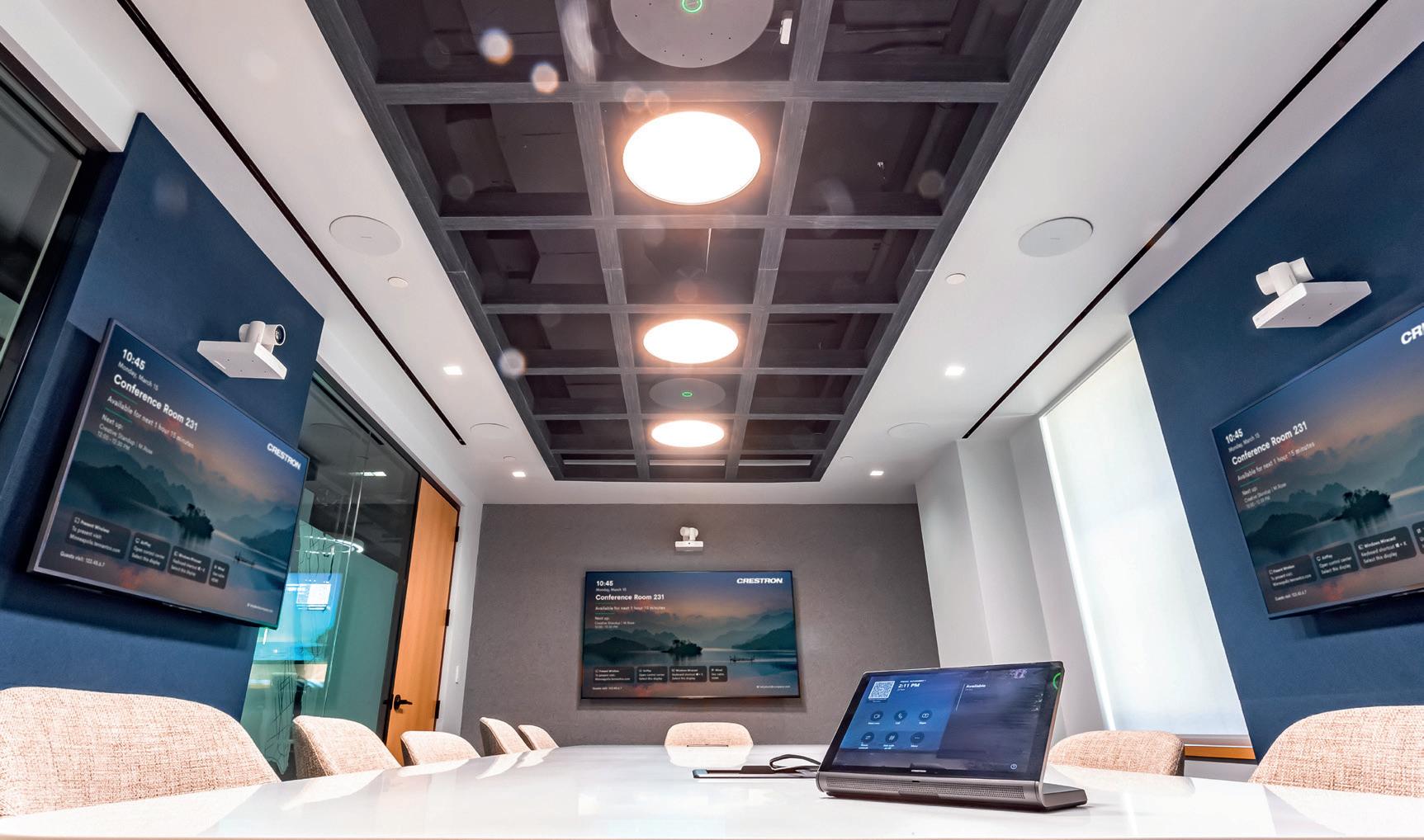
In October 2024, Crestron Electronics, a global leader in workplace and smart home technology, unveiled its flagship experience center in New York City. Located in the prestigious New York Design Center, the Crestron Experience Center is a state-of-the-art, interactive environment designed to immerse visitors in Crestron’s cutting-edge technology solutions for residential and commercial applications.
As technology becomes more integrated into both homes and workplaces, Crestron recognized the need for a space where decision makers across various industries could experience the transformative potential of its solutions. Additionally, it sought to make its solutions accessible to a broader audience, including decision-makers without a technical background. And finally, the company needed to showcase its innovations in practical, relatable environments to emphasize the usability and versatility of its offerings.
Crestron developed the New York City Experience Center with a couple of standout features in mind— the first of which is the ability to provide immersive demonstrations in real-world contexts. Dedicated spaces such as plug-and-play huddle rooms, advanced conference rooms, and a fully equipped modern apartment allow visitors to explore technology in relatable scenarios. The second crucial feature of the center is a unified residential and commercial focus. The center integrates Crestron’s residential and commercial solutions, demonstrating the seamless transition between home automation and enterprise systems.
The experience center spotlights Crestron’s expansive workplace technology portfolio. Crestron has collaboration offerings that equip everything from small huddle rooms to large multi-purpose spaces,
which are all named after famous Broadway shows. The “Jersey Boys” space features a front-of-room 75-inch BRAVIA Professional Display. The “Rent” room features the Crestron Sightline Experience, which has Sony BRAVIA Professional Displays—one on each wall—so that virtual participants are in the line of sight of in-room participants from any seat.
Aside from the demo areas, two BRAVIA Professional Displays are present in the cafe to play digital signage content for guests. When the other demonstration areas are not in use, those other displays are also able to sync up with the same content, which can be personalized for hosted events.
Crestron’s residential offerings are showcased in an immersive NYC apartment replica. Through the front door, visitors are immediately greeted by a sleek and modern home design with a 98-inch BRAVIA Professional Display at the center of the inviting living room. The television cycles through various digital signage content during tours, but can also be leveraged as a demo by using one of the interfaces for the Crestron Home platform to play content through the Crestron DM NVX AV-over-IP platform.
In the bedroom and home office, two 55-inch BRAVIA Professional Displays showcase another television replication. The home office also showcases a 55-inch display in portrait mode that portrays different landscape visuals to mimic the views outside a window.
With Sony BRAVIA Professional Displays, Crestron’s Experience Center offers an immersive experience both for commercial and residential applications. It sets a new benchmark for how businesses can bridge the gap between technology and customer needs, ensuring that solutions are not only seen, but truly experienced.



Founded in 2017 with a single office and an inherited basic conference room setup—a TV and a plug-in USB camera—private equity group and financial firm Further Global soon realized its limitations as conferencing needs increased and the business grew. After expanding into a second office space in the same building, Further Global set out to create a modern, high-quality conference center and meeting environment that would reflect the firm’s professionalism.
Mitch Pessin, vice president and co-founder of Solarus Technologies, and Kevin Muller, a director from Further Global’s operations team collaborated to design and implement a state-of-the-art AV solution that aligned with the firm’s vision and unique needs. Known for its commitment to custom solutions that cater to the unique needs of each client, Solarus Technologies has been a long-time partner of Yamaha Corporation of America and its Unified Communications division. With guidance from Susan Rullo, chief executive officer of Rullo Technologies, Pessin and Muller were able to provide the right solution.
“Our client required an AV solution that could meet a range of environments, including corporate and team meetings, remote conferences, and live events,” Pessin commented. “While focusing on audio clarity, ease of use, and system flexibility to support various conferencing platforms (e.g. Zoom, Teams, et cetera), Yamaha’s ADECIA solutions were a natural choice.”
The system upgrade for both rooms included a Yamaha RM-CR, a digital signal processor which is central to the rooms audio system, managing sound clarity and distribution. RM-CG ceiling microphone arrays were positioned in each room for optimal audio capture, and Yamaha RM-TT tabletop microphones were used as supplemental mics to enhance audio capture, especially for meeting participants sitting farther from the ceiling mics. The tabletop microphones also serve the secondary but important purpose of distributing easily accessible MUTE buttons across the table, and the built-in red and green LEDs in each RM-TT indicate the room’s mute status during a meeting. The system in both rooms also includes a control room computer that can be operated from the conference table using a wireless mouse and keyboard and supports a BYOD setup for users to take advantage of ADECIA’s full audio capabilities.
ADECIA handles all the audio balancing and adjusting automatically, which ensures that no matter where participants are in the room, their voices are picked

up clearly at normal conversation volume. “In the AV world, audio quality is critical,” Pessin highlighted. “If the video drops during a Zoom call, but the audio remains, you’re fine. But if you lose audio, you’re kind of sunk.”
Muller added, “Our team has reported a significant improvement in the audio quality of their live events and remote meetings. It’s incredibly user friendly and adaptable to various audiences and needs. The setup is sleek; it combines a modern and minimalistic design with automated functions so that everything works perfectly with minimal intervention.”
Yamaha’s ADECIA solutions are advanced yet straightforward, and its open architecture is engineered for ultimate adaptability. In Further Global’s application, the ADECIA system integrates with an AVer PTZ310, a 4K Ultra HD
resolution pan-tilt-zoom camera with IP-based control. In the smaller conference room, the camera features auto voice tracking, which allows it to automatically follow the voice of the person presenting and zoom in on speakers. The open architecture of ADECIA ensures that its sound system and AVer’s cameras can seamlessly communicate with each other over standard protocols.
“Another key advantage of the ADECIA architecture is that everything is powered over PoE, which greatly streamlined the installation,” Pessin added. “Since one cable carries both the audio signals and power, we could reduce cable clutter and keep the installation much more organized.”
Further Global’s new system upgrade is designed to be more than just a conference
space; it is a shared workspace that reinforces a culture of teamwork. The system’s USB audio capabilities allow for multiple audio inputs, making it easy to switch between sources with the push of a button. Similarly, the HDMI support allows for video to be switched between different sources—like a personal computer or a device at the table—providing quick, seamless transitions for different types of work and collaboration.
With these conference room upgrades, Further Global has two spaces that embody their dedication to quality and forward-thinking. The Yamaha ADECIA system delivers crystal-clear audio and adaptability, turning these rooms into dynamic spaces where both in-person and virtual collaboration flow effortlessly and strengthen client relationships and teamwork.



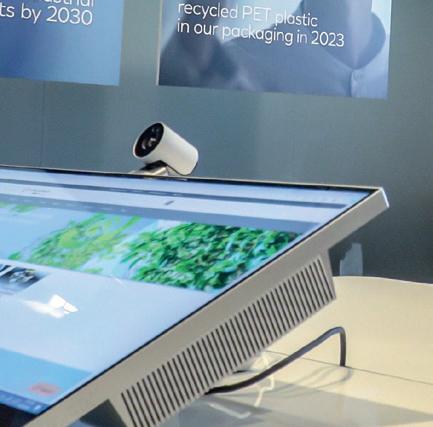



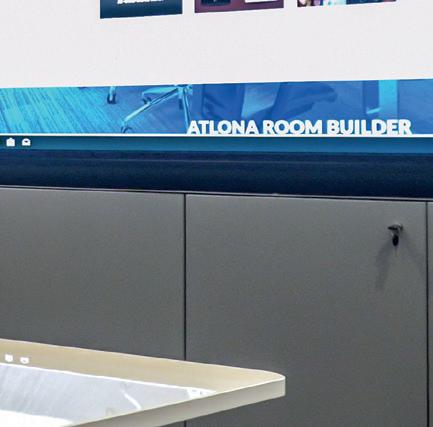
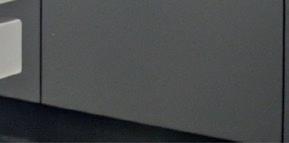
L’Oréal Poland has redefi ned the modern offi ce space with its new Innovative Creative Workspace in Warsaw. Designed to support dynamic collaboration, video conferencing, and interactive training sessions, this cutting-edge environment was brought to life through a sophisticated AV integration by AV Architektura, with Jupiter Systems’ Pana displays playing a pivotal role in achieving the workspace’s vision.
As a global leader in beauty and cosmetics, L’Oréal required a space that was aesthetically aligned with its brand and technologically advanced. The goal was to create a multi-functional environment that could seamlessly accommodate hybrid meetings, high-quality video recordings, and interactive workshops. One of the primary challenges was finding large-format displays that supported an ultra-wide 21:9 aspect ratio, ensuring an immersive and effective workspace for both in-person and remote collaboration.
To meet these challenges, Jupiter Pana 105T and Pana 34 monitors were selected as the centerpieces of the AV system, and a number of standout features within the finished installation would not have been possible without them: The ultra-wide 21:9 aspect ratio of the Pana 105T (105 inches) and Pana 34 (34 inches) displays delivered an expansive digital canvas, ideal for hybrid collaboration and high-definition content sharing; high 5K resolution ensured superior image quality, which is crucial for
L’Oréal’s work with high-precision color and design; daisy chain connectivity enabled efficient signal distribution, reducing the need for additional AV hardware; the interactive capabilities of the Pana 34 monitors allowed direct annotation, making creative meetings and training sessions more engaging; seamless integration of Jupiter Systems’ displays proved game-changing in configuring the space to support multiple functions; and the mounting of the Pana 105T on a custom mobile system allowed repositioning within a 3m range, ensuring adaptability for different meeting formats.
The integration of Jupiter Systems’ displays transformed L’Oréal’s Warsaw workspace into a state-of-the-art creative hub. The Pana displays played a critical role in enabling fl uid content sharing, seamless hybrid collaboration, and high-quality video experiences. The installation has set a benchmark for AV innovation in corporate offi ce environments, demonstrating how cutting-edge display technology can enhance productivity, collaboration, and engagement.
For AV integrators looking for inspiration, L’Oréal Poland’s project is a prime example of how Jupiter Systems’ Pana displays can redefine workspace functionality. Whether for corporate offices, training centers, or hybrid collaboration spaces, Jupiter’s ultra-wide, high-resolution displays provide a future-proof solution that blends technology with creativity.


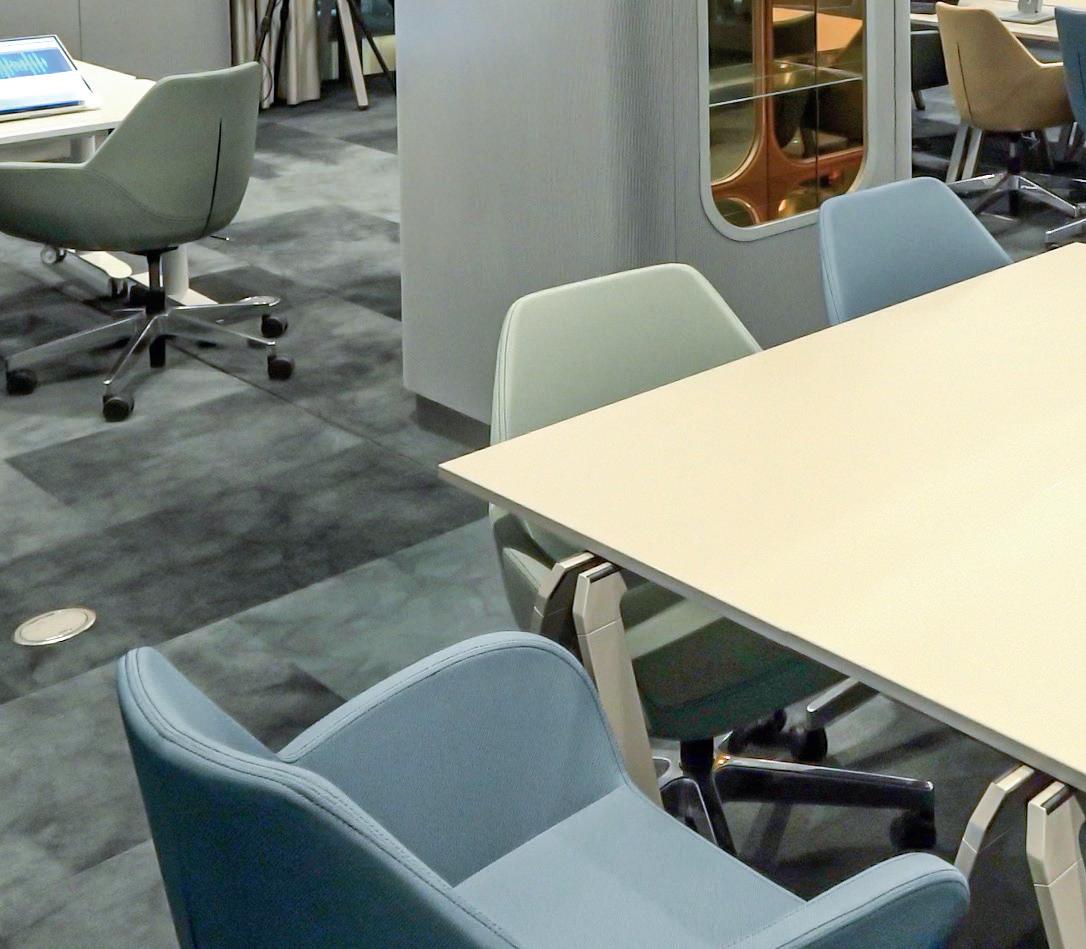

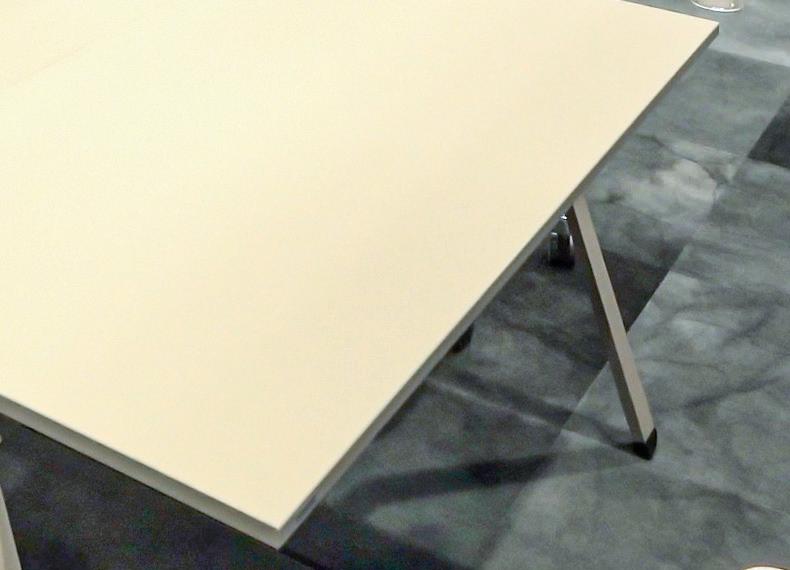
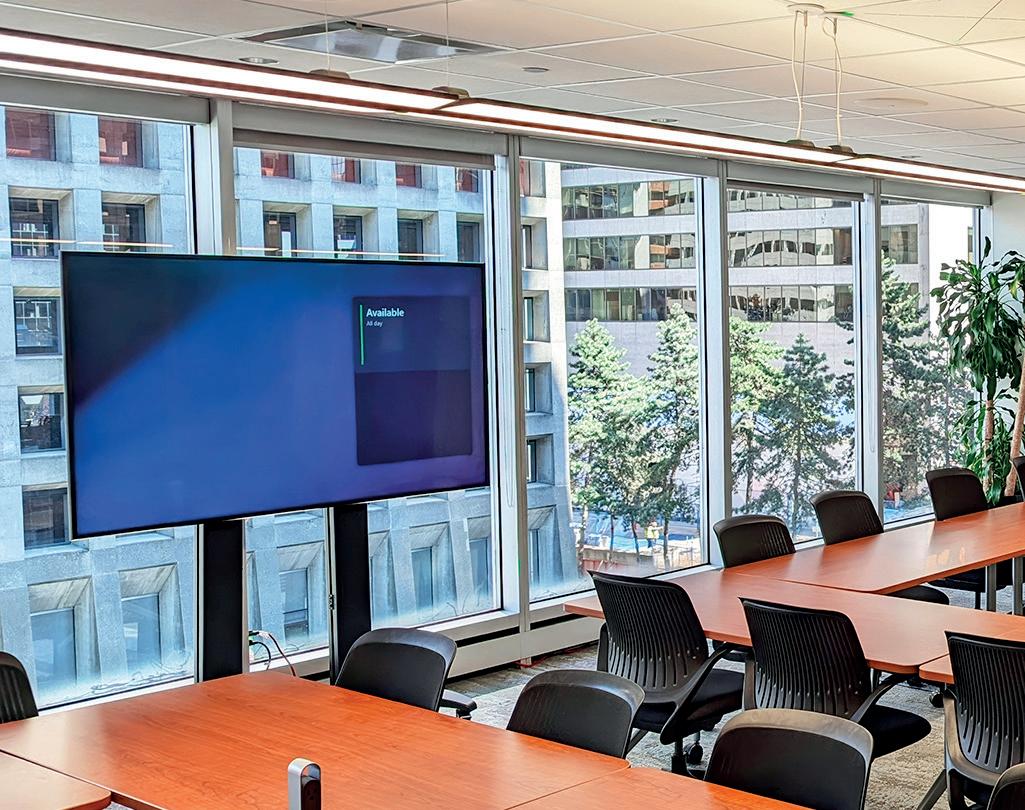
Landsure Systems, a Vancouver-based technology subsidiary, sought to create a dynamic and adaptable meeting room to meet the needs of its executive team. This room was to serve multiple purposes, from high-level executive meetings to training sessions and guest presentations. The room would be equipped with movable furniture, multiple display options, and an AV system that could quickly adapt to different meeting formats. This demanded a straightforward and reliable system, ensuring that even non-technical users could operate it with minimal training.
To meet these needs, they turned to Limitless AV, a trusted AV integrator with a reputa-
tion for delivering tailored solutions using the latest technologies. To ensure that the new space would be versatile, user friendly, and meet the high standards of Landsure’s leadership, Limitless AV chose to integrate a range of Extron technologies. The result is a sophisticated yet easy-to-use AV system that exceeded client expectations.
“At Limitless AV, we prioritize delivering technically advanced and user-friendly solutions,” Barton Moxness, president of Limitless AV said. “With Extron technologies, we were able to create a meeting space for Landsure Systems that is both versatile and incredibly easy to operate.”
A significant challenge was the size and lay-
out of the room, which required an AV system that could deliver consistent audio and video quality across an ample, multi-purpose space. The room’s complexity, with its need for multiple use cases and the demand for high-quality audio and video transmission, required a solution that seamlessly integrated various technologies while remaining user friendly.
One of the critical elements of the new system was the integration of Extron technologies with Microsoft Teams Rooms and Logitech solutions. Extron TouchLink touchpanel GUI templates for Microsoft Teams Rooms allowed Limitless AV to create an intuitive and efficient user interface. This interface featured built-in presets, enabling users to quickly set up the room for different types of meetings with just a few taps. The simplified user interface is crucial

in making the system accessible to all users, regardless of their technical expertise.
Limitless AV selected the Extron DMP 64 Plus, a compact digital matrix processor with six DSP input channels, for audio processing. The DMP 64 Plus is ideal for managing the room’s audio sources, ensuring clear and natural sound during meetings and presentations. The processor’s Acoustic Echo Cancellation technology maintains audio clarity during remote collaborations.
The audio system also includes the Extron XPA 2001 70V power amplifier, which provides reliable amplification in a compact form factor. Paired with Extron SF 26CT LP low-profile ceiling speakers, this setup delivers consistent, high-quality sound throughout the room.
“Extron’s products have consistently prov -
en to be reliable and adaptable,” Moxness said. “The DMP 64 Plus and XPA 2001 amplifier, in particular, provided the high-quality audio performance essential for Landsure’s multipurpose room.”
The system also includes several Extron DTP HDMI 4K 230 transmitters and receivers for video distribution. These devices allow for the extension of HDMI signals up to 230 feet over a shielded CATx cable, ensuring that high-resolution video could be displayed on multiple screens with no loss of quality. A DA4 HD 4K distribution amplifier is used to distribute HDMI signals to multiple displays and allows for quick and easy configuration changes depending on the meeting type.
An Extron IPCP Pro 250 xi control processor provides centralized control over the entire
AV system. This processor’s advanced security standards and Gigabit Ethernet connectivity ensure that the system is not only powerful, but also secure and reliable. The IPCP Pro 250 xi was seamlessly integrated into the Logitech Tap Touch Controller, enabling intuitive control over microphone volume, vocal reinforcement, TV display power, and additional custom automation features.
Overall, the Landsure Systems meeting room project was a resounding success, receiving high praise from both the client and end users, and meeting the high expectations of leadership. The collaboration between Limitless AV and Extron technologies resulted in a space that meets the company’s functional needs and enhances the overall user experience, making it easier than ever for teams to collaborate effectively.


Shell Point is an award-winning retirement community based in Fort Myers, Florida. The community provides residents a tropical, resort-like lifestyle, while simultaneously offering a full range of medical services to ensure residents’ healthcare needs are met. Administrators and caregivers are entrusted to provide a high level of care to all Shell Point residents, and this responsibility often comes with stressors that take a toll on their mental health. Shell Point’s commitment to providing top-notch care extends beyond the residents themselves, offering personnel tools and programs to maintain both their physical and emotional health.
In late 2024, Shell Point worked with an organization called Soul Happy to bring into its main lobby area an innovative new stress-reduction tool called the Mind Pod. This therapeutic enclosure creates an engaging, sanctuary-like environment designed to immediately reduce stress levels of those who enter the enclosure.
Red Dot Digital Media was brought in to help Shell Point’s IT team customize the “in-pod” experience. Upon entering, individuals are asked to rate their current stress level and then asked to choose from a series of different videos intended to help them reduce anxiety, boost focus, and transform their attitude. Videos include deep breathing exercises, introspection techniques, faith-based content, and other calming videos, all of which help to center the individual and promote a sense of calm. Individuals are asked again to rate their stress level before exiting the Mind Pod. In total, the full experience lasts approximately five minutes.
“Shell Point’s commitment to positive aging extends far beyond the day-to-day care we provide our residents, as we also care deeply about those who visit and work here at Shell Point,” Sarah Owen, Shell Point said. “The Mind Pod is a wonderful resource available to everyone who enters, and we’re pleased to see it have such an immediate and positive impact.”
Shell Point engaged Red Dot to customize the Mind Pod workflow and give them a way to measure and report on the Mind Pod’s positive impact on employees, residents, and guests. This included updating the hardware configuration to include a 32-inch Bluefin touch- interactive display with BrightSign Built-In.
The convenience of having BrightSign media player capabilities integrated into the display streamlined the hardware layout and ensured interoperability. Red Dot, which does extensive integration within the BrightSign ecosystem, chose to use the

Wallboard content management system (CMS) for its versatility, and the ability to bypass programming in HTML to reduce the development timeline and ultimately reduce the cost to Shell Point.
“We’re grateful that Shell Point trusted Red Dot to tailor the Mind Pod experience in a way that delivers a valuable experience for their residents, visitors and employees,” Darryl Kuder, president of Red Dot Digital Media said. “Shell Point staff now have daily visibility into how the Mind Pod is being used, with daily email reporting that shows which pieces of video content are impacting users most positively. Furthermore, the templates we developed ensure that future content updates can be made by internal staff, without having to engage outside technical resources.”
Additionally, Red Dot was able to templatize the layout such that future updates can be made by Shell Point IT personnel without the time and expense of engaging outside consultants. Another reason for engaging Red Dot was to create a reporting system to provide quantitative feedback on the Mind Pod’s positive impact.
The Mind Pod has been extremely well received not only by staff, but by residents and visitors alike. Beyond the therapeutic benefits, staff have remarked that simply having the Mind Pod centrally located in the lobby is a visual reminder that they have convenient access to a tool that effectively and positively impacts their mental health. Family caregivers have measured stress levels decreasing an average of 27 percent, while staff members experienced a decrease of approximately 20 percent. This measurable and immediate impact demonstrates that the Mind Pod is improving the mental well-being of those who live and work at Shell Point.
Cara Hewett and Tracy Zboril, Mind Pod co-founders said, “We developed this experiential, innovative, real-time therapeutic environment to deescalate anxiety, and we’re thrilled to report the immersive, sanctuary-like enclosure is already showing positive results in its current location at Shell Point.”




1
Pro BRAVIA BZ35L Series
Sony’s Pro BRAVIA BZ35L Series of 4K HDR displays is available in 55-, 65-, 75-, and 85-inch options. The models feature an increased storage of 32GB, 550 nits of robust brightness, and an X1 Processor. The easy-to-mount series incorporates many of Sony’s most beneficial features, including unparalleled image quality, a wider viewing angle, thoughtful professional features, a smart System-on-a-Chip (SoC) platform, and a streamlined common cabinet design. The 24/7 BZ35L series also offers high-impact, realistic, smooth, and natural visuals ideally suited for retail, corporate, and educational environments.
pro.sony








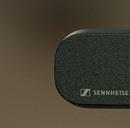

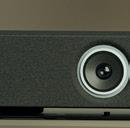






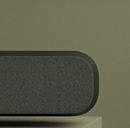






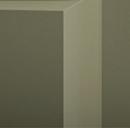




2 TeamConnect Bars
Part of the renowned TeamConnect Family, Sennheiser’s TeamConnect Bars are the most feature-rich, all-in-one conferencing devices in their class. Available in two models for different room sizes—TC Bar S and TC Bar M—they scan cale to the largest meeting rooms. The TC Bar S has four microphones and two speakers, while the Bar M has six microphones and four speakers. Both bars deliver trusted Sennheiser audio quality. With plug-and-play setup via USB and advanced beamforming technology, they ensure freedom of movement. A 4K Ultra HD camera with AI features enhances video quality. They also offer flexible setups, an onboard Dante port, multiple mounting options, remote management, brand-agnostic integration, and advanced security.
sennheiser.com




3 AT-OME-CS31-SA-C Presentation and Collaboration System
Atlona’s AT-OME-CS31-SA-C Presentation and Collaboration System features AV switching, USB routing, audio mixing, amplification, and control, making it ideal for modern classroom and meeting environments. The OME-CS31-SA-C supports switching between one USB-C input and two HDMI inputs to a single HDMI output. Sources connected to the inputs, such as laptops, computers, and document cameras, can be selected and routed to the output, connected to a projector or display. The system features a four-port USB hub for connecting cameras, speakerphones, interactive displays, and other devices, as well the ability to switch them between two host devices.
atlona.com
Shure’s Microflex (MX) Loudspeakers, designed specifically for conference rooms, offer premium audio quality, flexibility for customization, straightforward installation, and seamless interoperability. The expanded Microflex Loudspeaker line includes a PoE+-powered networked conferencing amplifier and four new passive conferencing loudspeakers—ceiling, pendant, and wall mounted. Alongside other Microflex Ecosystem devices, customers now have a complete solution that includes microphones, digital signal processing (DSP), and loudspeakers—all working seamlessly to deliver unmatched performance, security, and installation efficiency. The passive loudspeakers are offered in multiple form factors and colors so AV integrators and professionals can select the option that best fits within their project.
shure.com
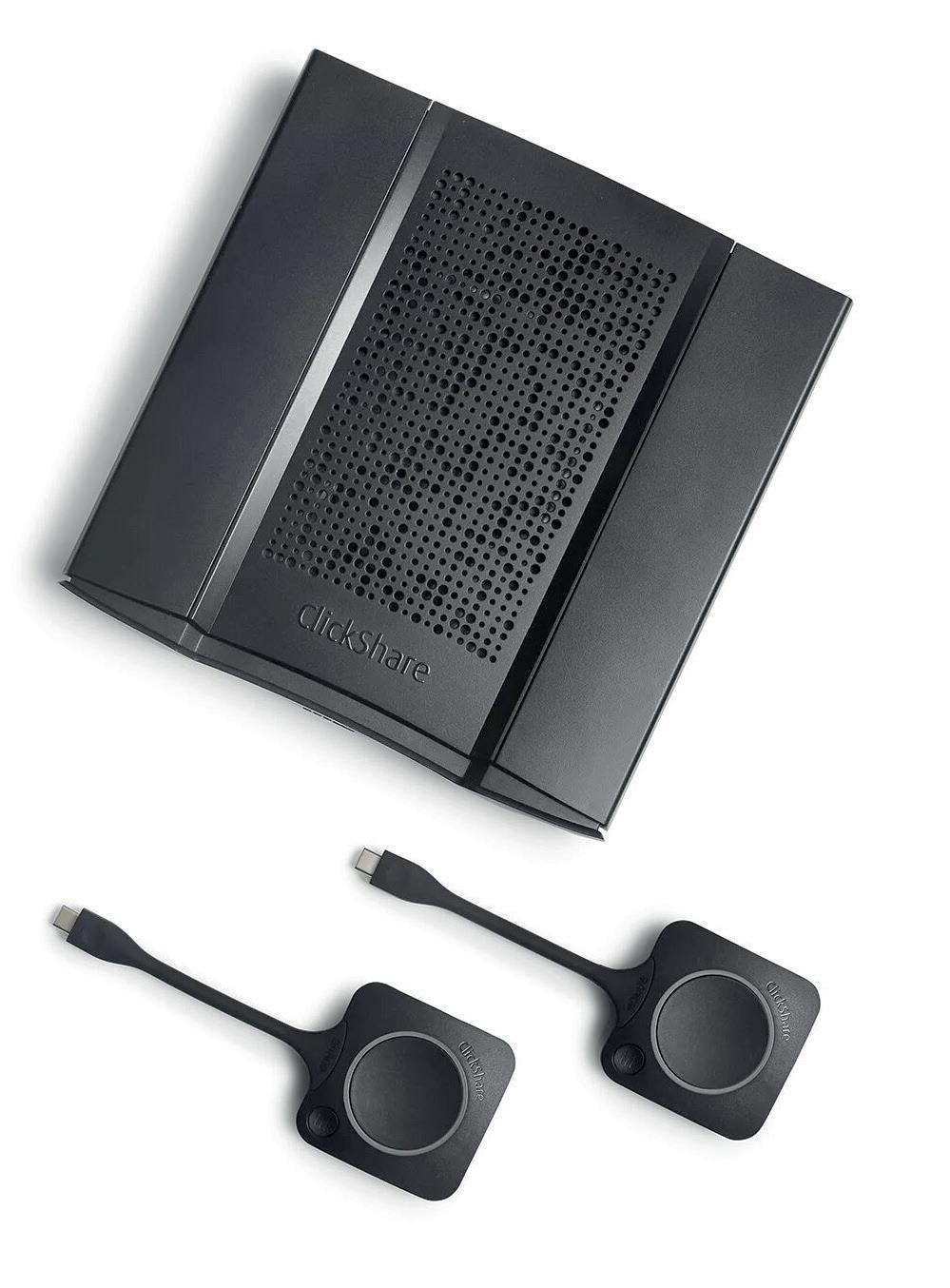
5 ClickShare CX-50 Gen 2
Barco’s ClickShare CX-50 Gen 2 brings flexible, inclusive wireless conferencing to high-impact meeting rooms. ClickShare automatically connects to room devices and helps start a video meeting from your laptop using any conference tool. Create a space where minds meet, with just one click. Use the ClickShare Button or the intent-based meeting flows powered by the app. Enjoy dual-screen support, content, and people side by side on screen, as well as touch-enabled interactivity features like local view of the room display, annotation, and blackboarding. ClickShare offers enhanced security and network integration for any enterprise. XMS Cloud Management guarantees easy management of units and analytics to drive the digital workplace.
barco.com


6
The Philips Interactive 3000 Series by PPDS is specified for a wide range of market verticals where color quality and visual sharpness are paramount to the viewing experience. PPDS’ most advanced and versatile range of multi-touch displays to date, the chic, bezel-free Philips Interactive 3000 Series delivers 24/7 use, with razor-sharp accuracy, color precision, and brightness. Offered in 24-, 32-, 43-, and 55-inch variants, the 3000 Series extends beyond traditional portrait/landscape mounting by featuring a 30-degree tilt option. This opens new installation and application possibilities, whether on a shelf, angled or upright POS, at order points and kiosks, or for wayfinding. All variants are equipped with an edge-to-edge PCAP touch screen, and are augmented with anti-glare and anti-fingerprint coating.
ppds.com
Yamaha’s New PoE Switches for ADECIA have expanded the ADECIA audio ecosystem. The SWX2210P-10G (10-port) and SWX2310P-28GT (24-port) intelligent L2 switches optimize Dante communications for connectivity, enhanced security, and network management for meetings and conferencing of all sizes. They are the first hardware products globally to become NDI Certified in the network switch category. Users can monitor multicast traffic, reduce bandwidth waste, and manage security settings via the ADECIA RM-CR GUI. Builtin PoE and PoE+ power provide reliable performance for connected devices. With these new switches, Yamaha is helping businesses create high-quality audio experiences with less effort, making meetings and conferences more efficient. yamaha.com



rossvideo.com 8 Quorum
9
Ross Video’s Quorum is an advanced, user-friendly meeting control solution designed to streamline live video production for legislative, corporate, and government settings. It automates and simplifies the management of council meetings, boardroom discussions, and parliamentary sessions, ensuring smooth and professional broadcasts. With an intuitive interface, Quorum enables seamless integration of video, audio, and graphics, reducing the need for extensive technical expertise. Its automation capabilities enhance efficiency, while real-time controls provide flexibility for operators. By ensuring consistency and reliability in live productions, Quorum empowers organizations to deliver polished, high-quality content for both in-person and remote audiences.
10 UltraRes W Series Korbyt Anywhere AI-Assisted Digital Signage Content Builder
Planar’s UltraRes W Series line of 105inch ultra-wide format 5K LCD displays is optimized for next-generation collaboration for today’s modern hybrid workforce. The series provides customers with an ultra-wide-format 21:9 display ideally sized to suit the most popular unified communications and video collaboration platforms. In addition to brighter, wider color gamut panels with local dimming, Planar UltraRes W Series is ready for HDR content and features multi-source viewing, remote monitoring, and 24/7 reliability. The displays are also available with interactive touch technology, ENERGY STAR certification, and are designed to mitigate cyber security threats.
planar.com
The Korbyt Anywhere AI-Assisted Digital Signage Content Builder is powered by its own proprietary large language model (LLM). Korbyt’s AI distinguishes itself by seamlessly integrating AI-powered content creation and distribution into the Korbyt Anywhere digital signage and workplace experience platform to address enterprise communication challenges, while maintaining brand consistency across all touchpoints. Korbyt’s native integration of AI gives organizations scalable, strategic tools to deliver impactful content, adapt to evolving needs, and unlock key insights— all while reducing operational overhead and empowering them to thrive in today’s dynamic digital landscape.
go.korbyt.com

12 1 Beyond Cameras 11
11 PowerLite 810E 3LCD Laser Display


Epson’s PowerLite 810E 3LCD Laser Display offers a modern, flexible solution for today’s hybrid workspaces. Built with 3-chip, 3LCD technology and 5,000 lumens, the lamp-free display delivers sharp, bright images sitting up to 160 inches from the wall. It features a virtually maintenance-free laser light source and various aspect ratios from standard 16:9 to super-wide 21:9, ensuring equitable hybrid meetings where participants can easily see and be seen. Built-in sound, digital zoom, and the Epson Setting Assist app make installation easy, and it includes a suite of free software to simplify casting and fleet management.
epson.com
Crestron’s 1 Beyond PTZ Cameras with optical zoom intelligently and clearly capture every participant to increase meeting equity and engagement for hybrid meetings in larger spaces. Optical zoom options 12x and 20x ensure clear close-ups, even for someone sitting 60 feet away. The p12 and p20 are classic PTZ cameras that pair with Automate VX visual AI functionality to auto-frame participants and provide advanced camera switching. The i12 and i20 are intelligent PTZ cameras that offer built-in presenter tracking and enhanced visual AI. These cameras are designed and certified to meet Microsoft Teams software and Zoom Rooms software high-performance specifications.
crestron.com
13 Emerald DESKVUE PE
Black Box’s Emerald DESKVUE PE receiver allows for up to 16 connected systems to be displayed as individual windows on up to four 4K monitors, including one ultra-wide curved 5K monitor. Users can arrange, resize, or move/drag system tiles or windows across the connected monitors, allowing superior flexibility and viewing options to the desktop canvas. Seamless switching of the systems happens automatically in the background as users move their mouse from one connected system to another—no need for manual switching commands. Emerald AV WALL, a software feature native to Emerald DESKVUE, makes it easy to display a single source from an Emerald system on a 2x2 video wall for viewing by a larger group.
blackbox.com

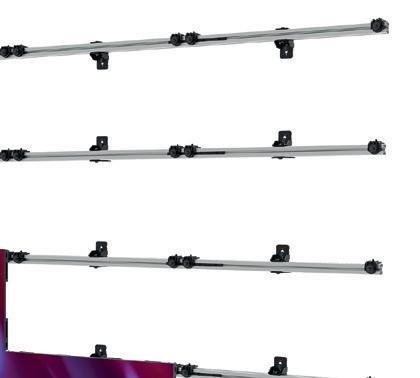
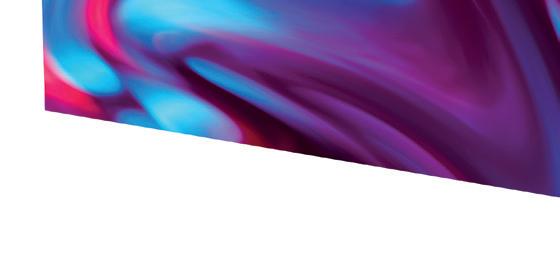





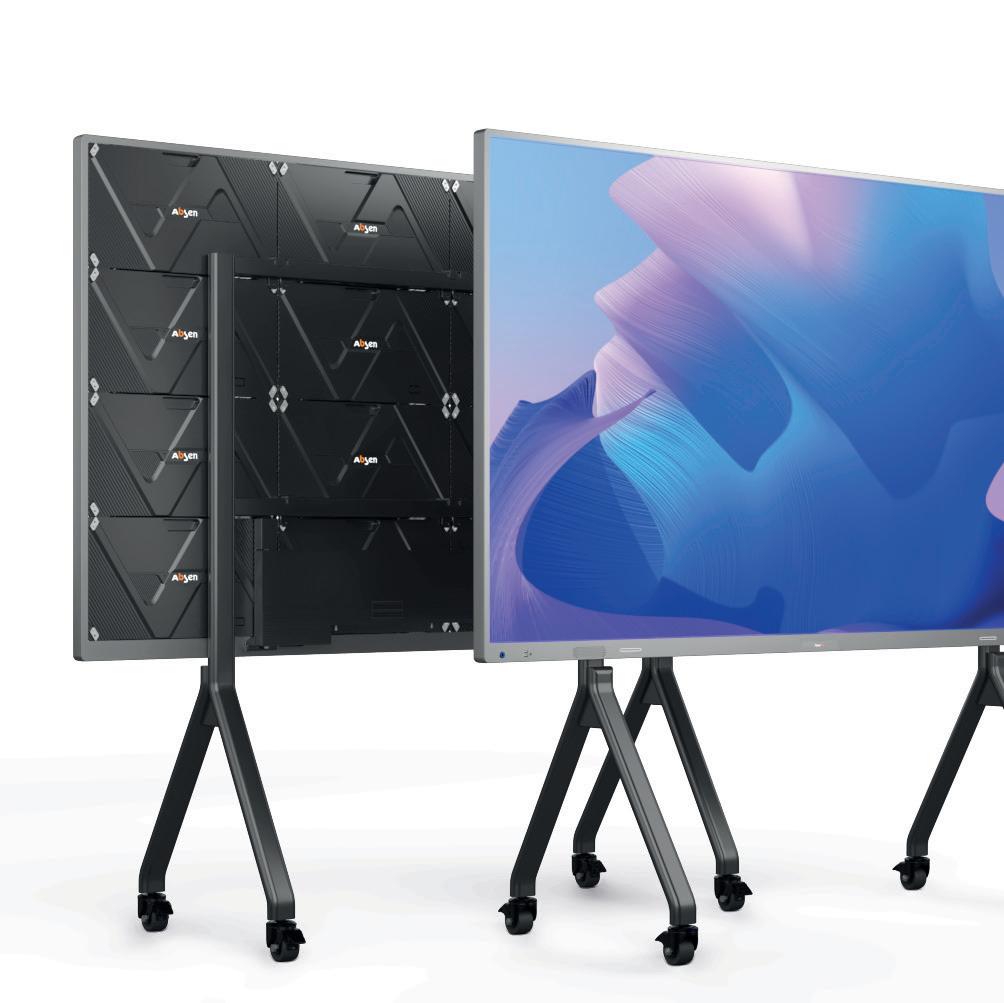

14 SEAMLESS Kitted Universal dvLED Mounting System
Peerless-AV’s SEAMLESS Kitted Universal dvLED Mounting System (DS-LEDUNV) is an award-winning video wall solution, expertly designed to craft dvLED video walls efficiently, easily, and economically. This industry-first, 1:1 “one display, one mount” universal design ensures a streamlined process—from inventory management to order processing to shipping. The patent-pending universal spacer quickly measures common cabinet sizes without any vertical wall templates for a precise construction.
peerless-av.com
15
16 4K X Series
Absen’s 4K X Series redefines visual excellence with ultra-high-definition clarity and precision. Ideal for corporate lobbies, mission-critical applications, and high-end retail, this premium direct-view LED solution boasts a sleek, bezel-free design for seamless large-scale displays. With HDR support, advanced calibration, and a high contrast ratio, the 4K X Series delivers vibrant colors and superior image quality. Engineered for reliability, energy efficiency, and easy front serviceability, it ensures long-term performance with minimal maintenance. Whether enhancing presentations, engaging audiences, or elevating brand presence, the 4K X Series is the ultimate solution for creating impactful, immersive visual experiences in any environment.
absen.com
Jabra’s PanaCast 40 Video Bar System (VBS) is the first 180-degree Android-powered video bar designed for small meeting rooms. It is the only small-room Android bar that captures the entire room, ensuring everyone is seen and heard clearly. This latest innovation builds on the success of Jabra’s PanaCast 50 VBS, bringing the same powerful performance to smaller spaces in a more compact and cost-effective package. With its wide field of view, exceptional audio quality, and seamless usability, the PanaCast 40 VBS delivers an all-in-one solution that transforms small meeting rooms into high-performing collaboration hubs.
jabra.com
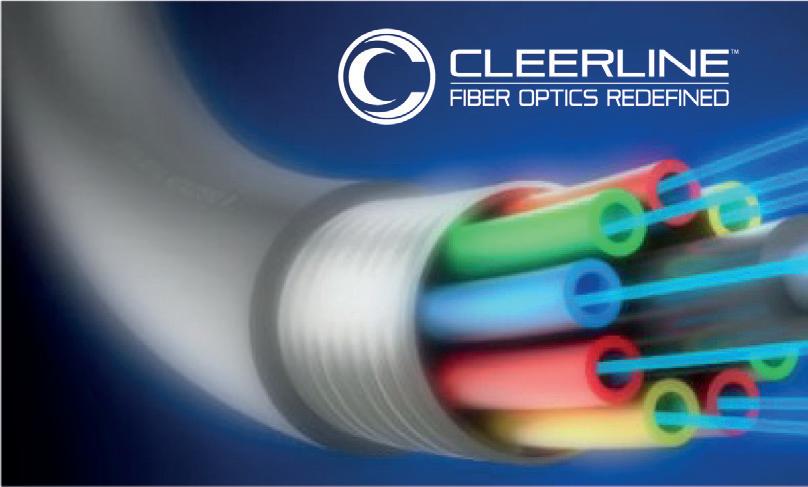

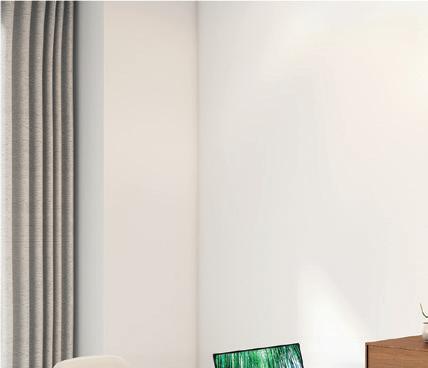





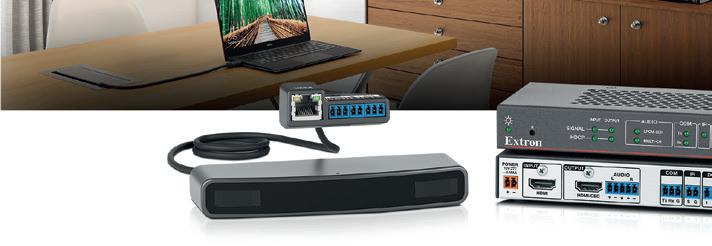

17 Stronger, Safer, Faster (SSF) Fiber
Reliable connectivity is essential for the modern workplace. Cleerline’s Stronger, Safer, Faster (SSF) Fiber delivers the future-forward performance, durability, and ease of installation that businesses demand. Cleerline SSF delivers superior speed and bandwidth—crucial for handling high-volume data transfers, cloud-based applications, video conferencing, and countless IoT devices now and in the future. Cleerline offers unmatched durability and ease of installation, with enhanced bend tolerance and crush resistance, lowering maintenance costs over time. As workplaces continue to integrate bandwidth-intensive technologies such as AI, VR, and 5G, a Cleerline fiber infrastructure ensures that businesses stay ready for the next wave of innovation.
cleerline.com
18 Workspace Automation Controllers
Extron’s Workspace Automation Controllers are designed to add easy, secure display control and automation to workspaces of all sizes. Depending on the model you choose, you can have automatic display control via an occupancy sensor either built right into the workspace controller or easily integrated as part of a streamlined room automation system. Right out of the box, these automation controllers will automatically power on a display via CEC when a person enters a room and turn it off at the end of the meeting when no motion is detected. Using the built-in web page, you can configure automatic display control over Ethernet, RS-232, or IR. For added convenience, both models support Power over Ethernet.
extron.com
19 Image Point Classic LED Bundles
Crimson AV’s Image Point Classic LED Bundles are available in 108-, 135-, 162-, and 216-inch sizes. Each bundle includes a powerful processor and mounting solution, simplifying the setup of stunning LED walls. Designed for seamless integration, these bundles make quoting and specifying effortless, delivering exceptional clarity and convenience for any application. Bundled solutions for 108-, 135-, 162-, and 216-inch video walls include a Novastar processor, a standard wall mount or ceiling mount, 20 percent spare parts included with each bundle, and optional guided or full-service installs available at an affordable additional cost.








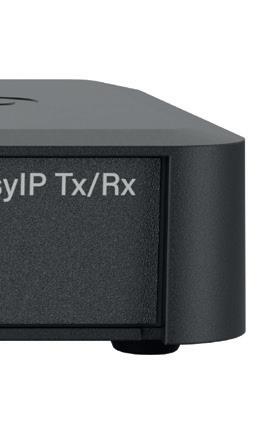
SYSTEM 12
For paging and background music, Quam’s SYSTEM 12 is a complete lightweight, UL-listed, shallow-depth, 2-by-2-foot layin ceiling tile replacement loudspeaker system consisting of an 8-inch OD loudspeaker with a 5-ounce magnet and a 5W, 25/70V transformer. The molded fiber enclosure is 1,283 CID. The SYSTEM 12 has a powder-coated steel baffle with standard perforation and four seismic tie-off points. The cable clamp is included, and no assembly is required.
quamspeakers.com
21
22 EZMount Cable Management System EasyIP Tx/Rx HDMI Encoder or Decoder
The CableEZ EZMount Cable Management System is a real problem solver for classrooms, corporate, and hospitality environments. Whether it’s a portable TV, concrete wall space, or any area where traditional cable installations are challenging, this mount provides an efficient solution. Schools and hotels are currently using this to protect the connections on their portable displays, allowing for the same secure, clean, and convenient connection as the wall-mounted CableEZ solution. The EZMount allows a user to easily install to any TV, without the need for any tools or infrastructure change. Sometimes you just need a way to quickly and cleanly secure a cable to a display—that’s EZMount!
cableez.com
Vaddio’s EasyIP Tx/Rx HDMI Encoder or Decoder is two-in-one device that offers a simple way to add features and functionality to EasyIP environments. In transmit mode, EasyIP Tx/Rx converts HDMI signals and analog audio inputs to EasyIP and Dante streams. In receive mode, Tx/Rx converts EasyIP and Dante signals and delivers them as 1080p HDMI and analog audio outputs for local viewing and listening. With support for Dante, analog, and EasyIP audio routing options, the EasyIP Tx/Rx is a powerful addition for video distribution in conferencing, live presentations, and digital signage applications. PoE+ and a compact design also make it ideal for discreet installation behind displays, under tables, or in AV racks. legrandav.com


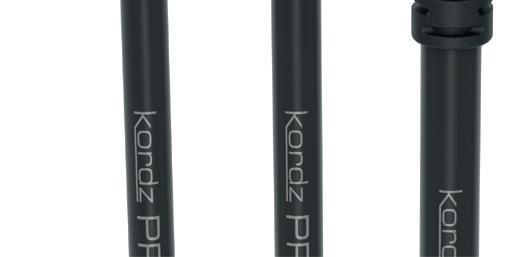



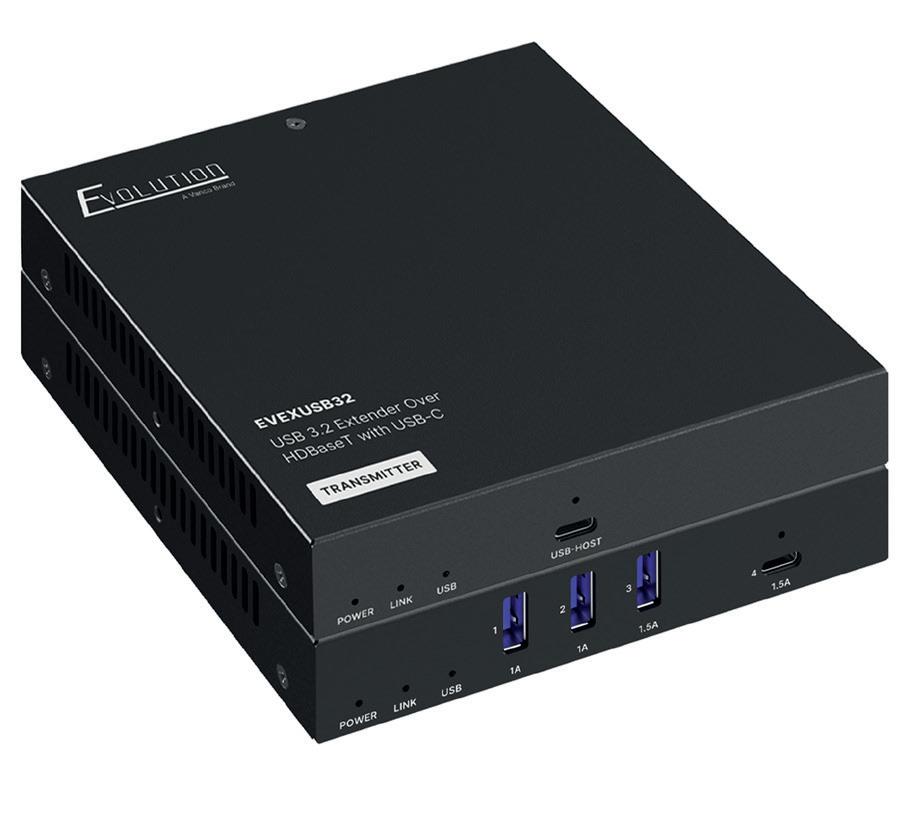
23 PRO USB-C Passive Cables
Kordz PRO USB-C Passive Cables deliver full-featured, certified USB4 Gen2 performance, support high-bandwidth data up to 20Gbps and 4K60 DisplayPort video, and offer 240W power delivery on lengths from 0.5m to 2m. A 60W version is available at 3m. For projects requiring USB-C cable of longer lengths from 5m to 10m, Kordz also offers the PRO USB-C Active Optical Cable. It supports full-featured USB3.2 Gen2 functionality for 10Gbps data transfer, 4K60 DisplayPort video, and 60W power delivery. This purpose-made selection of passive and active USB-C cables accommodates different installation needs, from desk setups to extended AV connections, and is also suitable for both commercial and residential applications.
kordz.com
24 22Miles Employee Office Suite
The 22Miles Employee Office Suite integrates the omnichannel 22Miles Content Management System into the Microsoft tech stack, including Teams, Outlook, and Exchange. Employees can use the 22Miles Teams app to conveniently make and manage reservations for rooms or hot desks and locate colleagues across the facility or campus. The 22Miles Outlook plug-in, which can be downloaded from Outlook or the Microsoft store, enhances this experience by providing users with a 3D map preview of workspaces, floorplans, and adjacent areas directly in Outlook, making selecting the right space resources for upcoming meetings or in-office days easier. 22miles.com
25 Evolution EVEXUSB32 HDBaseT USB 3.2 Extender
Vanco’s Evolution EVEXUSB32 HDBaseT USB 3.2 Extender is a complete USB extension solution that delivers full USB 3.2 Gen 1x1 signals up to 328 feet (100m) over a single Cat6/6a cable. The EVEXUSB32 has two units: a host and receiver. The host has one USB-C port and the receiver has three USB-A ports and one USB-C port, supporting up to three simultaneous peripherals. The receiver also delivers up to 5A of power: 1A each from two of the USB-A ports, and 1.5A from the remaining USB-A and USB-C ports.
vanco1.com
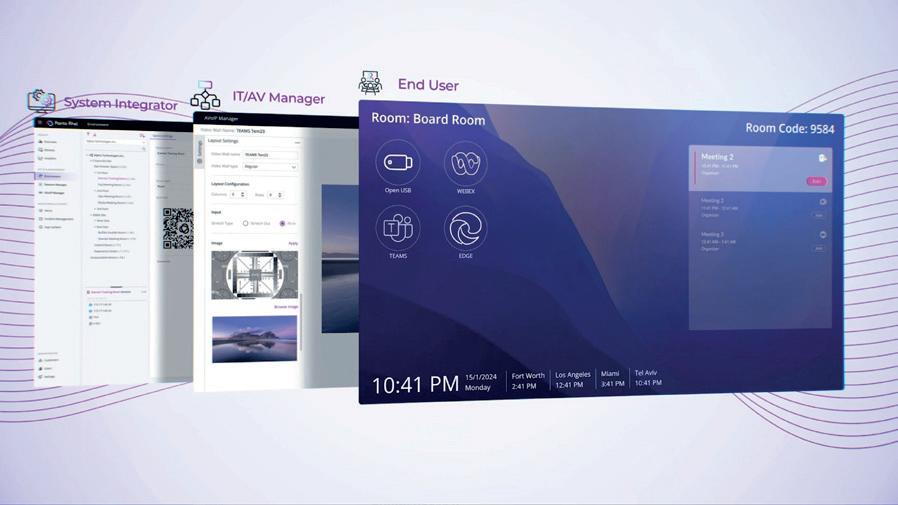

26
Kramer’s Panta Rhei is a next-generation AV platform that streamlines signal management, AV-over-IP distribution, and device management in a single, unified system. Designed for businesses, schools and large-scale venues, it enables seamless routing, monitoring, and management of AV infrastructure, including third-party devices on the network. With built-in monitoring and support tools, IT and AV managers can proactively manage deployments, ensuring high reliability and maximum uptime. Its intuitive interface and modular architecture simplify operations, reduce complexity, and enhance system performance. Backed by Kramer’s 360-degree service and support, Panta Rhei delivers a scalable, future-ready solution for evolving AV needs.
kramerav.com
27










28 CDE7530 Digital Display Avio 2 IP KVM
ViewSonic’s CDE7530 Digital Display is a 75-inch large-format digital display with native 4K ultra-HD resolution, a centralized control device management system, and a powerful secured embedded platform. The integrated ViewBoard Cast screen-sharing software and myViewBoard Display app allow up to four participants to connect and share content, regardless of operating system. The secured embedded platform ensures smooth content playback without the need for a PC or media player, making it simple to install and maintain. The CD7530 is Crestron Connected and Extron and AMX certified for seamless integration.
viewsonic.com
Matrox Video’s Avio 2 IP KVM delivers real-time KVMA signal extension, control, and routing for mission-critical applications that require remote access to computing equipment. It provides unparalleled image quality and performance with support for uncompressed streams on 10GbE networks, or visually lossless streams on 1GbE networks using the Pro AV or JPEG XS codec. Leveraging open standards like IPMX, ST 2110, and NMOS, Avio 2 offers scalable and flexible connectivity. Avio 2 also offers a fanless design, encryption, an intuitive Web UI for configuration, and fast KVM switching over IP for efficient workflows. Avio 2 is ideal for control rooms, medical applications, broadcast studios, and live events.
video.matrox.com





EPS Epaper Signs
Visix’s EPS Epaper Signs are a cost-effective solution to show schedules and reservations for shared rooms and desk hoteling. These lightweight, wireless and battery-powered signs utilize e-ink technology, allowing for real-time updates from your own calendar app with an average battery life of five years. Choose from screen templates for offices and desks or customize the layout to meet your needs. Signs available in four sizes are easily mounted on various surfaces without the need for cabling, making them versatile for use in meeting rooms, classrooms, and hybrid work environments. Custom faceplates and architectural surrounds are also available.
visix.com
30 MC-USB MaxColor USB 2.0-over-IP Device
Just Add Power’s MC-USB MaxColor USB 2.0-over-IP Device has two USB-C 2.0 ports on the front, one UBC-C 2.0 on the back, and two USB-A 2.0 on the front—all integrated into the system over 1Gb LAN. Compatible with Just Add Power’s renowned MaxColor series, the MC-USB provides access to all computers on the system with built-in KVM support, including touchscreen and webcam interface.
Blackwire Designs’ Heat Mapping Service takes the guesswork out of achieving exceptional network coverage. With our expert-designed solutions, you can achieve enterprise-grade installations without the hassle of complex planning. Simply submit your blueprints and project details, and the Blackwire team will create a network design optimized for quality and coverage. You’ll receive a comprehensive list of recommended devices, quantities, and ideal placements, ensuring a seamless and efficient installation. blackwiredesigns.com
